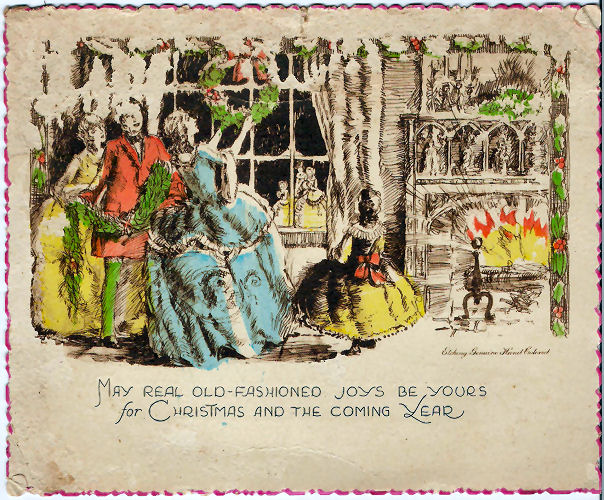

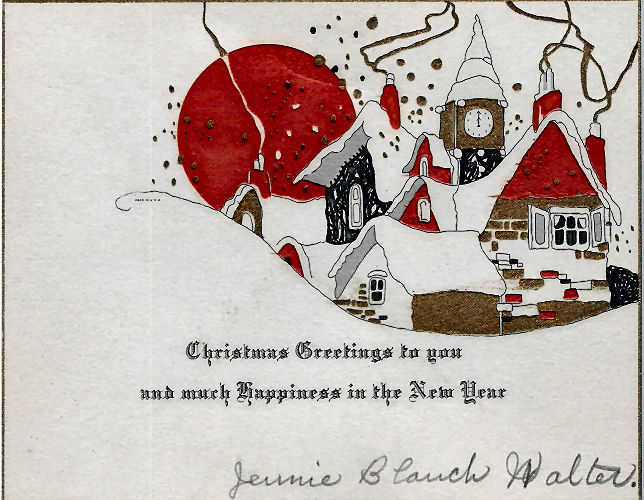
| Printed Greeting cards, especially those sent to celebrate Christmas, originated in Great Britain in the 1840s. I note the fact that 'printed' cards began around that time. Handwritten cards became popular as early as the 1820s; in 1822 the Superintendant of Mails in Washington, D.C., petitioned the United States Congress to pass an act limiting the use of the postal system for exchanging holiday greetings. Apparently, sixteen additional postmen had to be hired that year to handle all of the mail due to the proliferation of card exchanging. According to certain sources, Sir Henry Cole, director of the Victoria and Albert Museum, asked the painter, and member of the Royal Academy, Natalie Peters to design a greeting card that the museum could sell. Other sources claim that Sir Henry engaged the London artist, John Calcott Horsley to design the card. In any case, a card was produced showing a family enjoying a Christmas party in the center panel of a triptych shaped card. The two side panels bore images of charity in the feeding of the hungry and clothing of the poor. A legend placed at the bottom of the party scene (which would become a standard for most future Christmas cards), read: A Merry Christmas and a Happy New Year to You and an edition of one thousand of the cards were printed. But they were shelved until three years later. In 1843, the cards were put up for sale in London; they sold for one shilling each. The market for printed holiday greeting cards in the United States did not grow until Louis Prang, a German born immigrant, began producing lithographed Christmas greeting cards in 1875. The designs created by Prang employed floral arrangements rather than religious or festivity related motifs. By the year 1890, imported German cards, with scenes of Christmas party celebrations, Santa Claus and decorated evergreen trees became popular (while sprays of poinsettias continued to be the basic floral arrangements of choice for card design). Notice that a few of the cards use the alternative spelling of xmas for 'Christmas'. This is a point that bothers many people; they interpret the use of the letter "X" as sacreligious. The fact of the matter, though, is that the letter is not intended to represent the English letter "X", but rather is the Greek form of the first letter of the word Christ, that was used by the early Christians as an abbreviation for the name, Christ: Chi. |
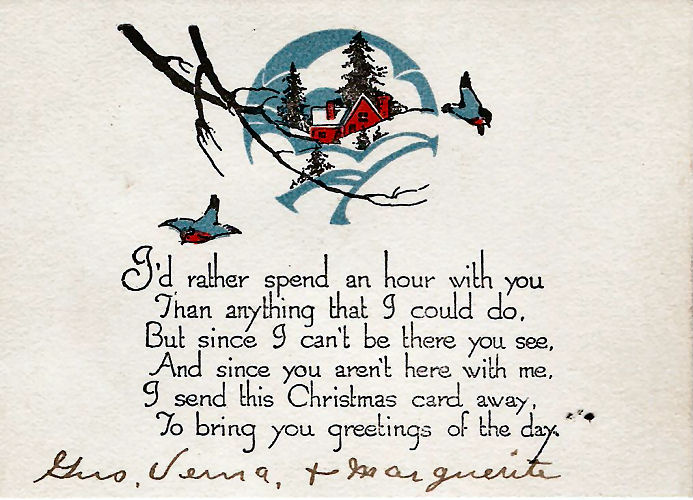
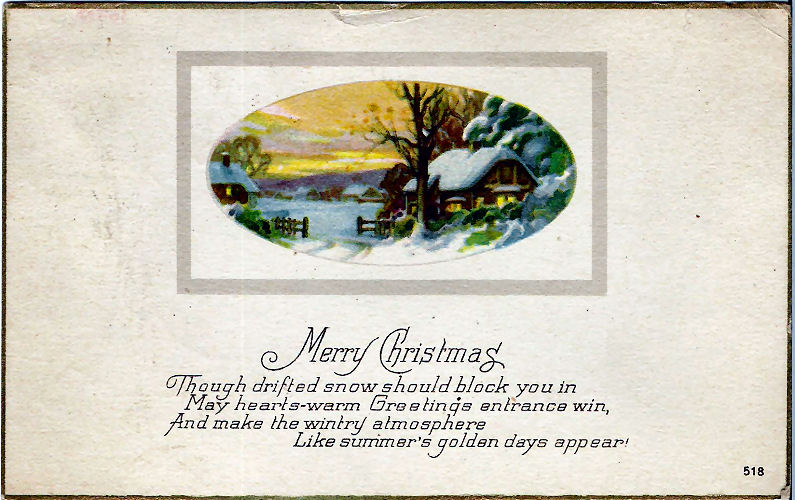
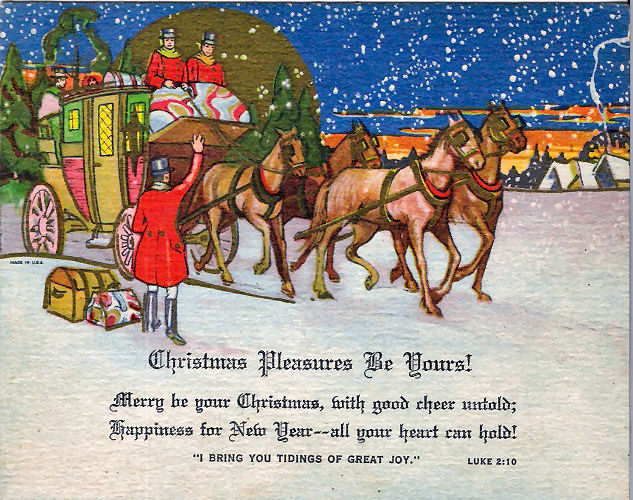
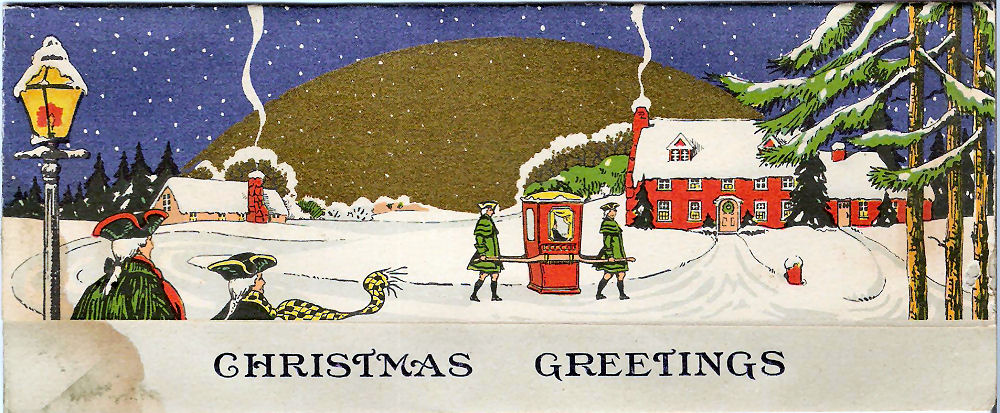
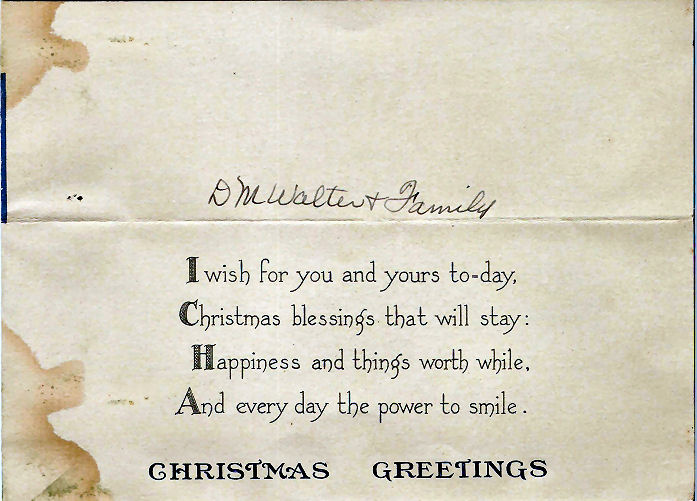
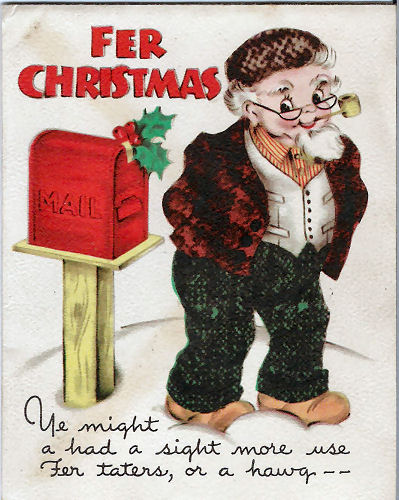
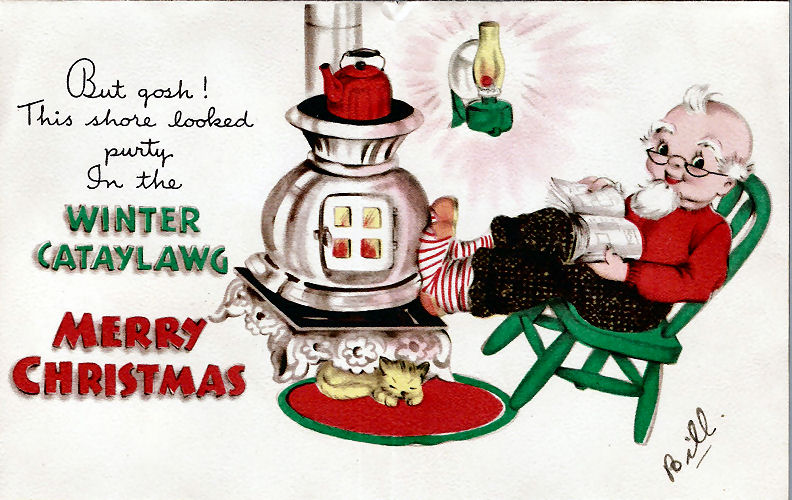
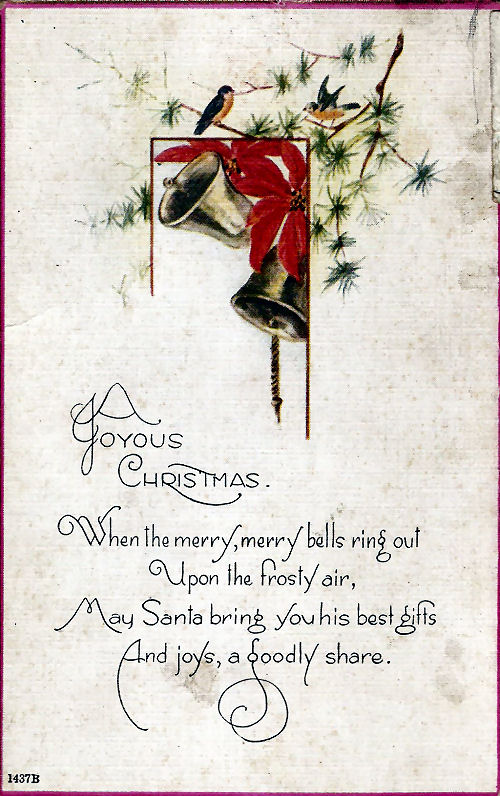
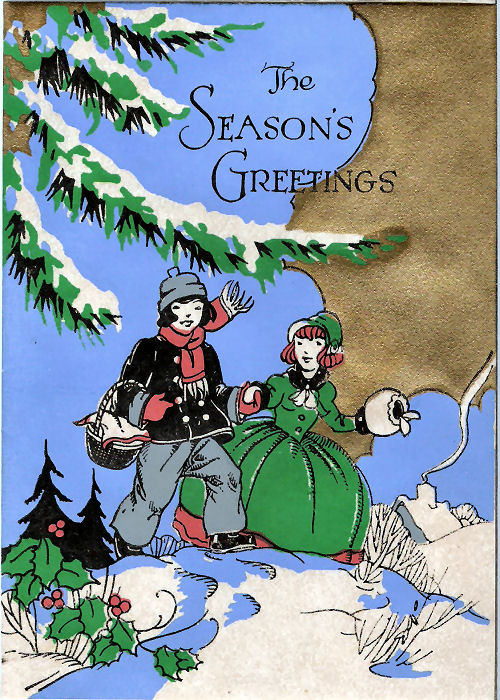
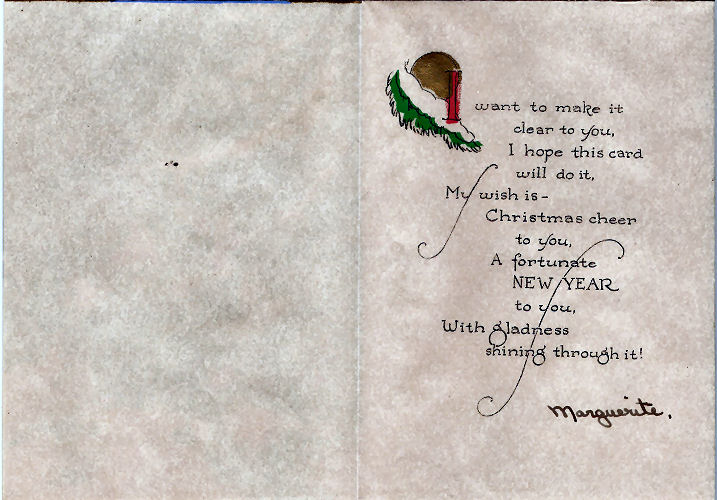
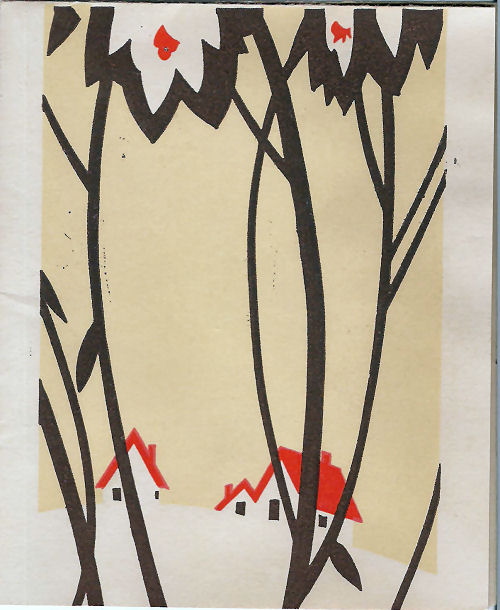
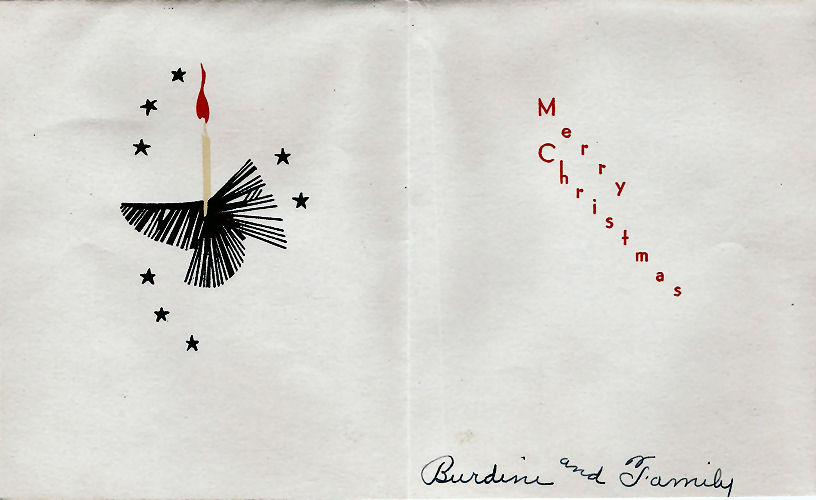
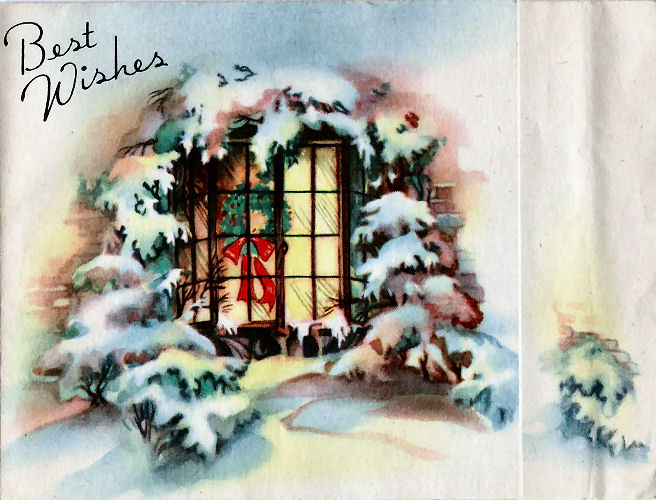
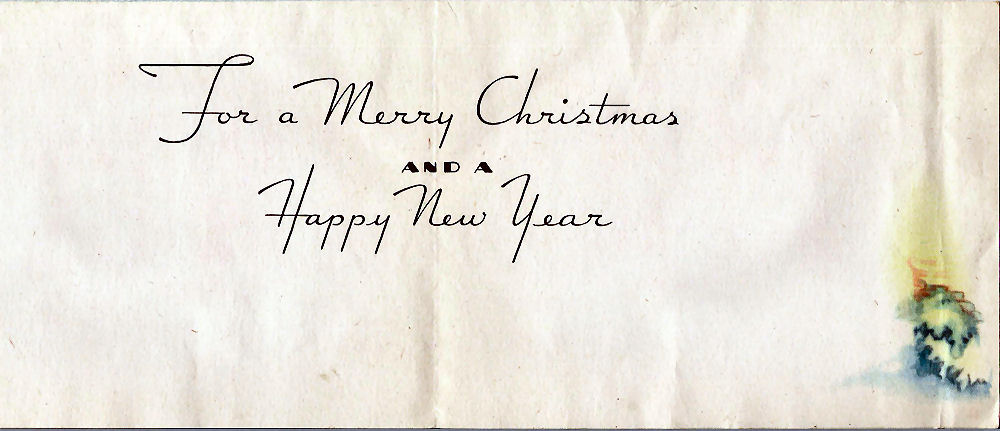
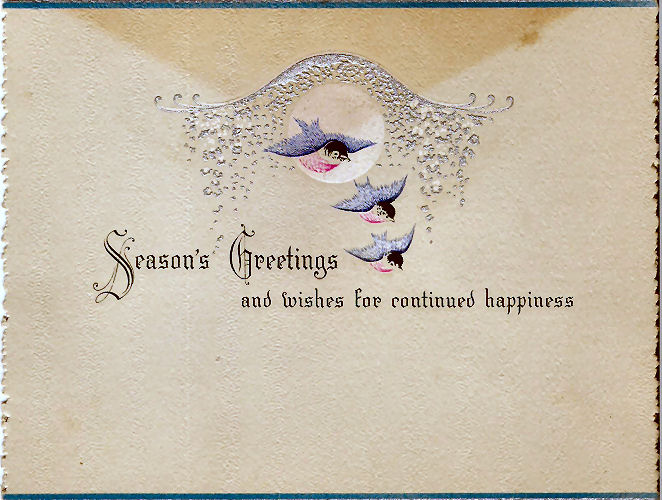
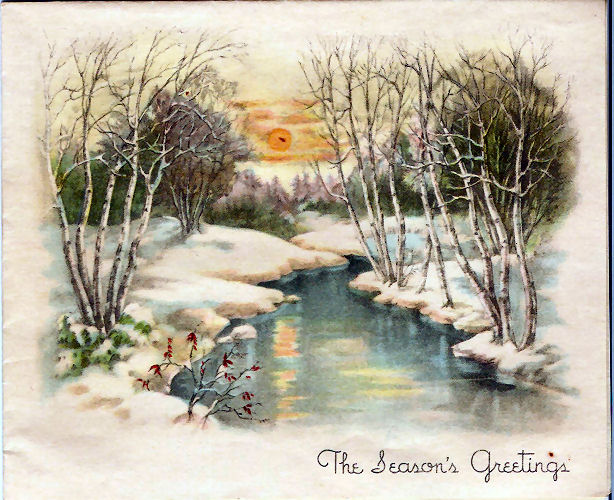
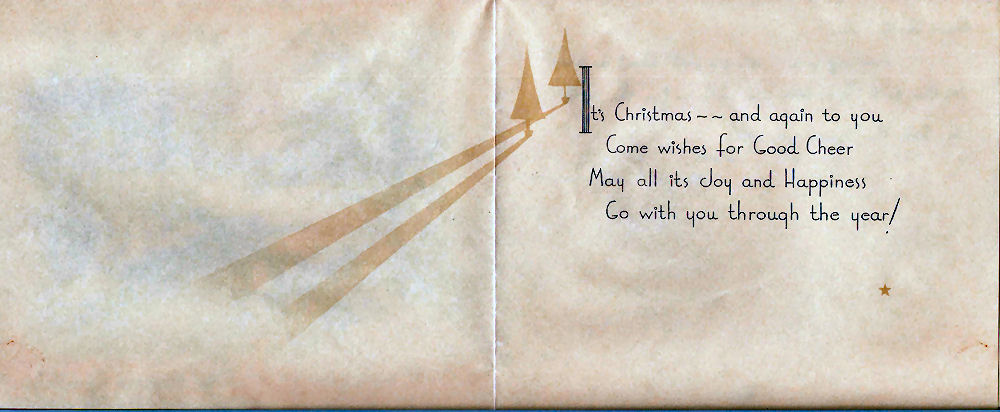
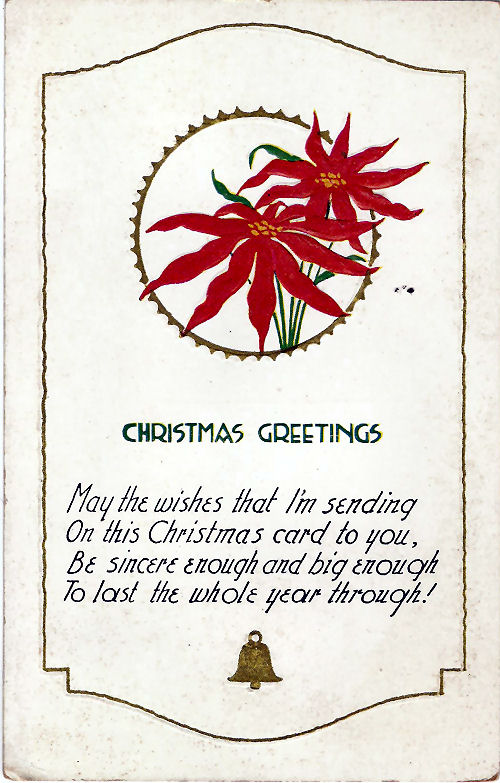
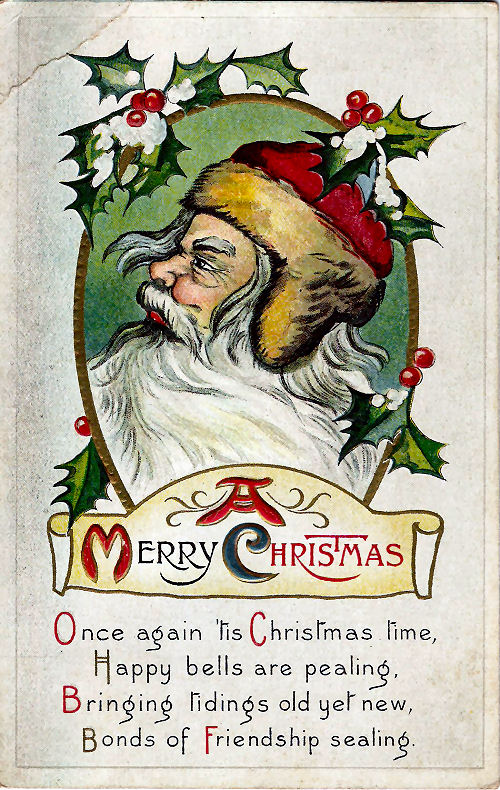
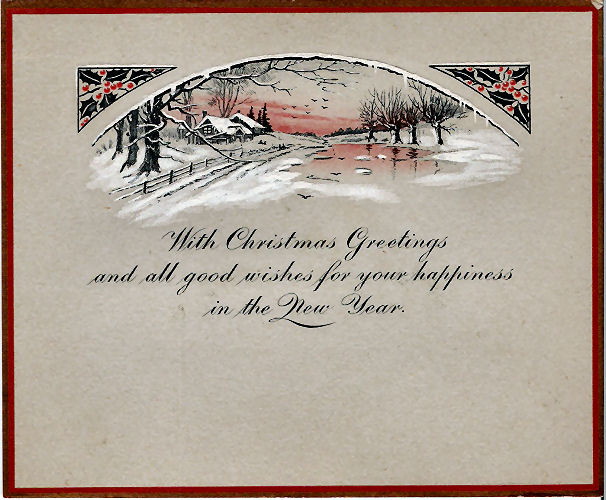
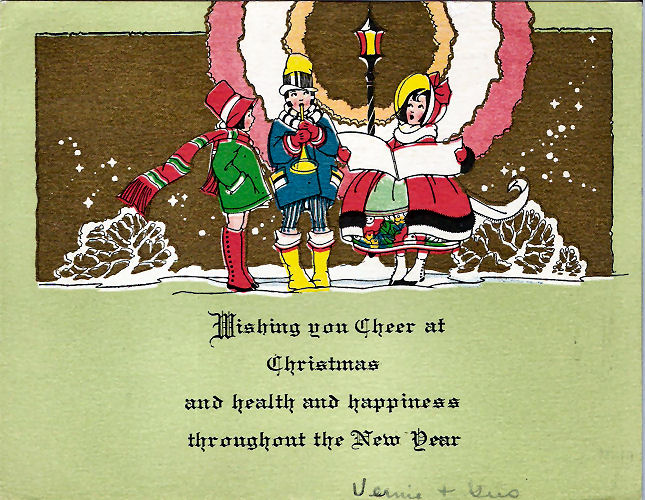
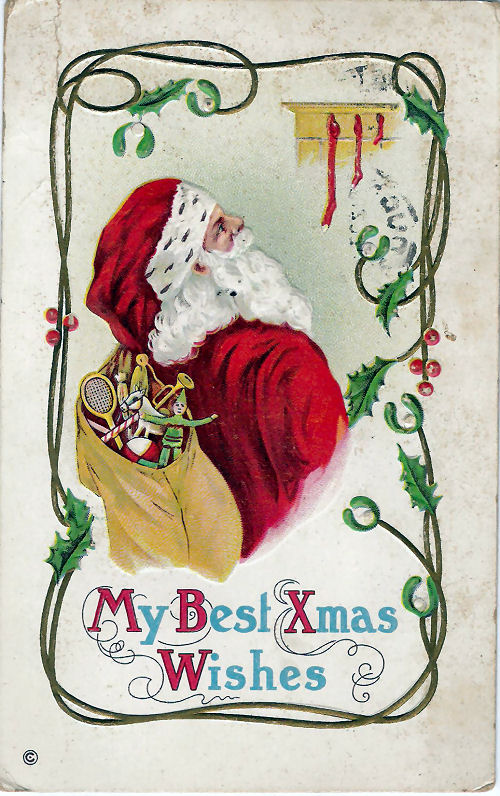
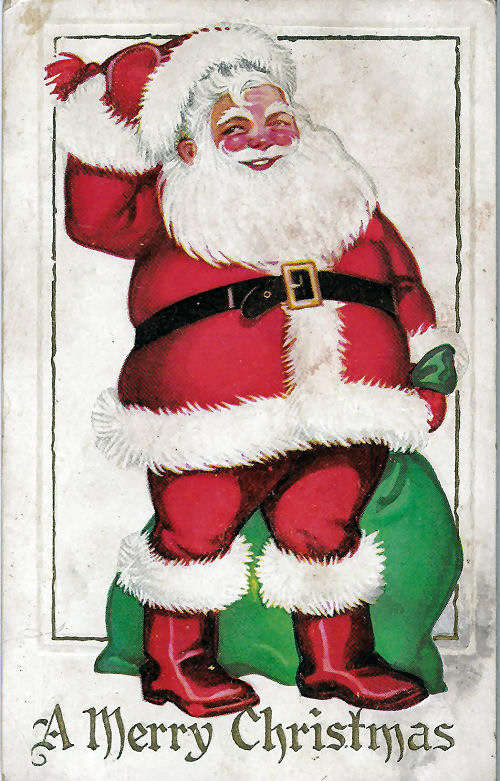
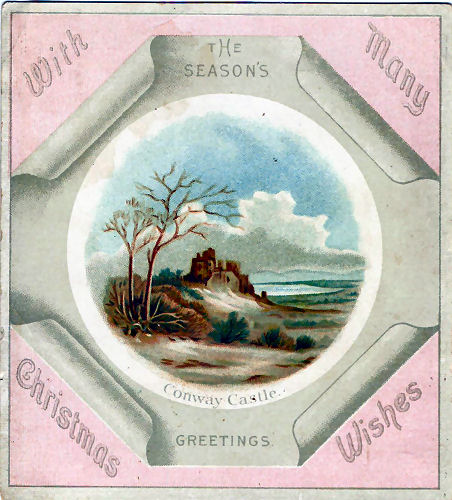
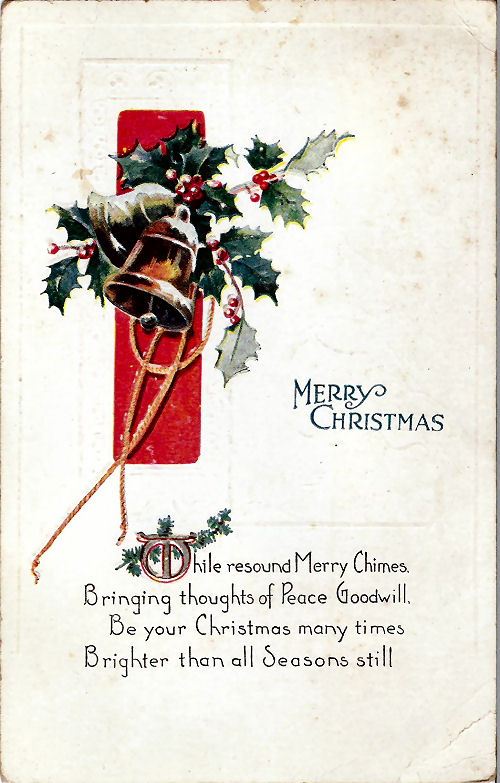
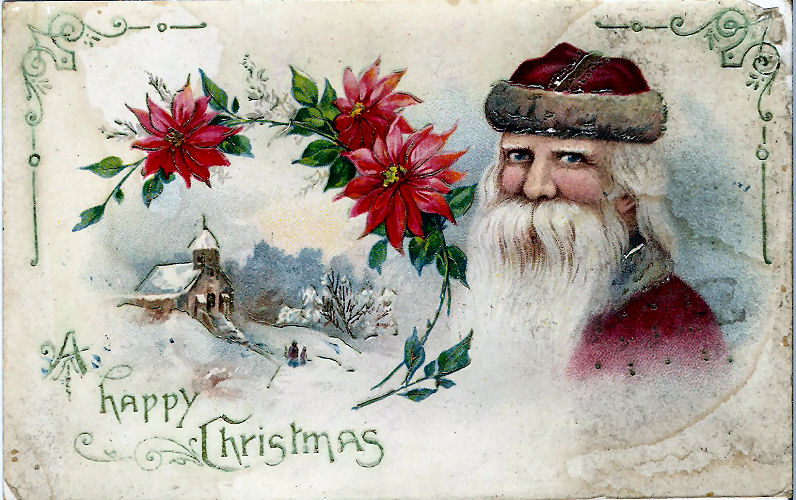
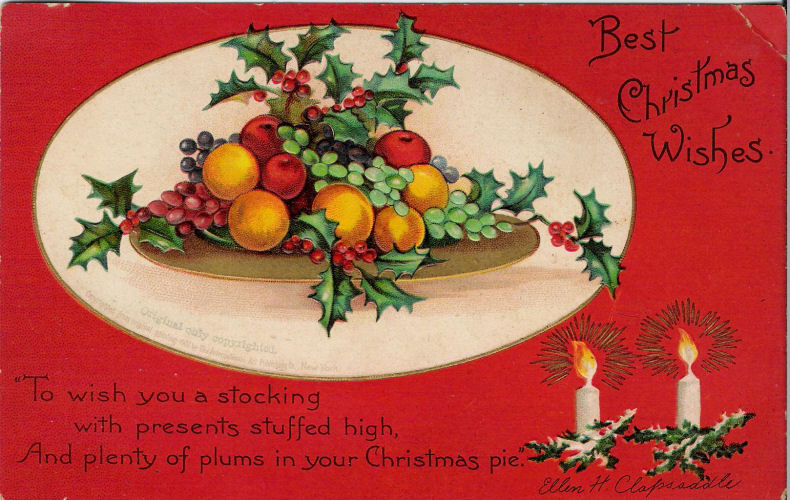
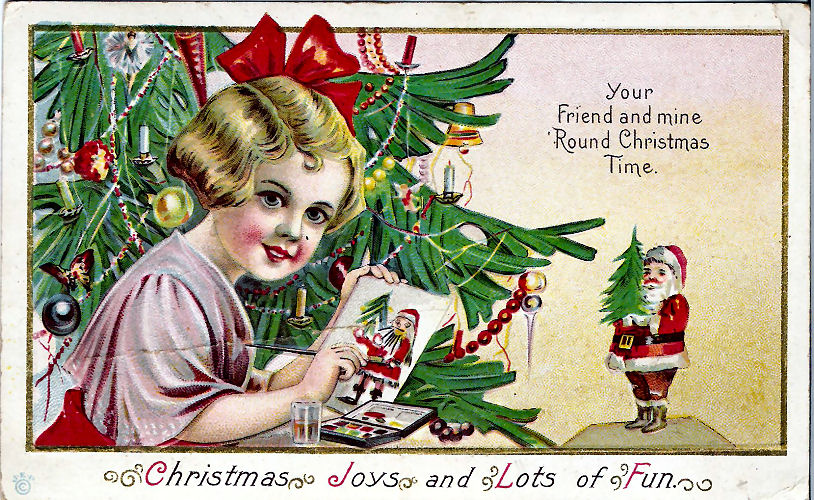
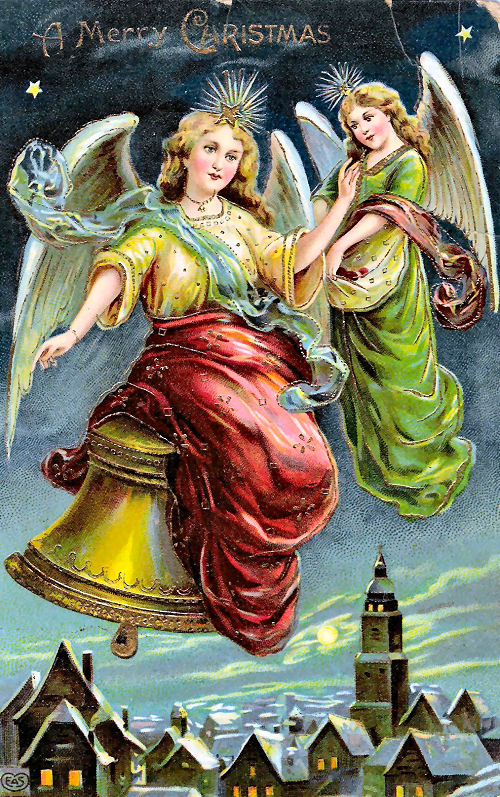
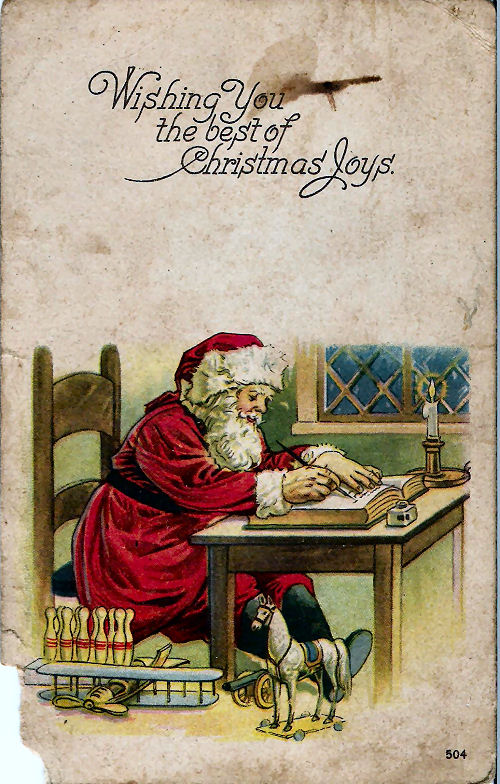
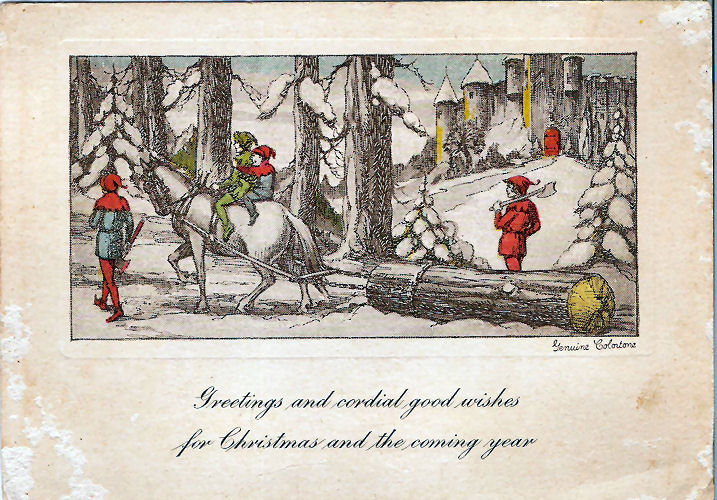
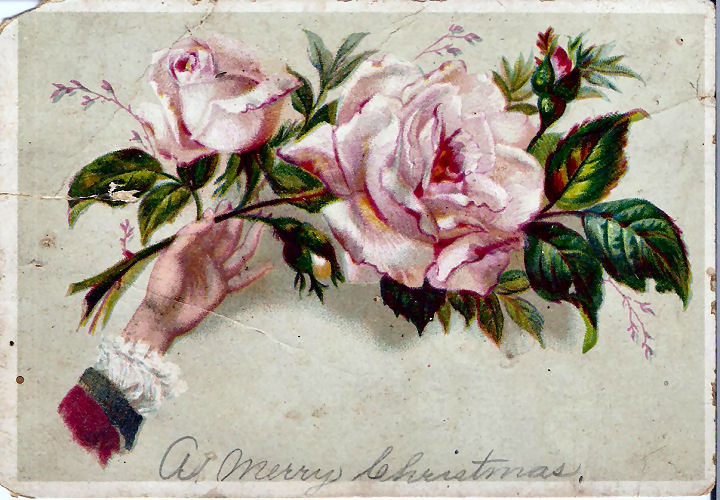
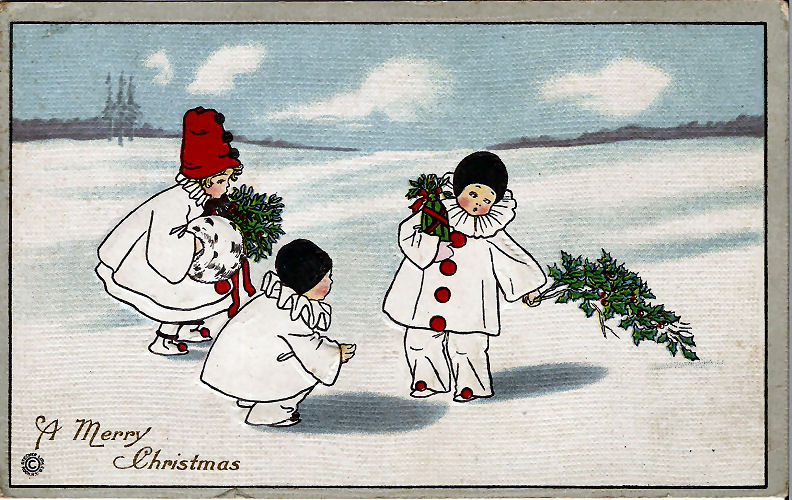
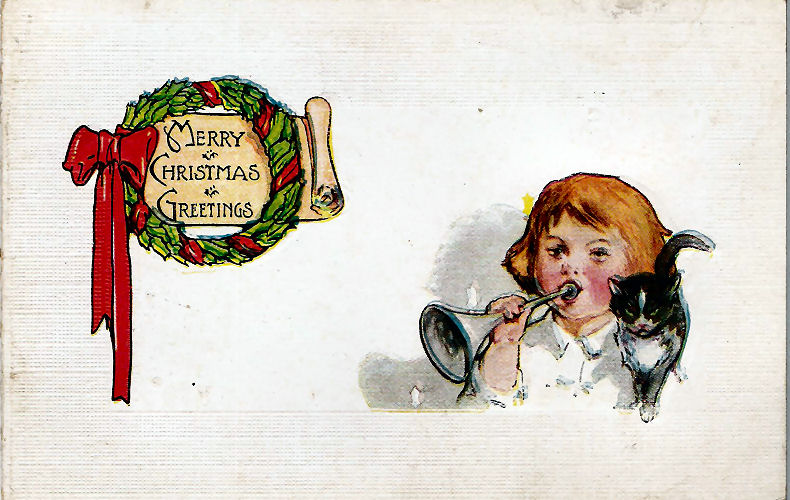
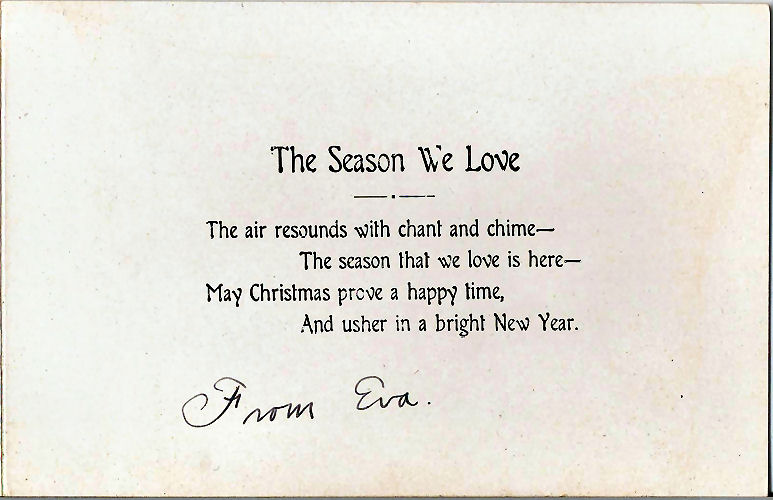
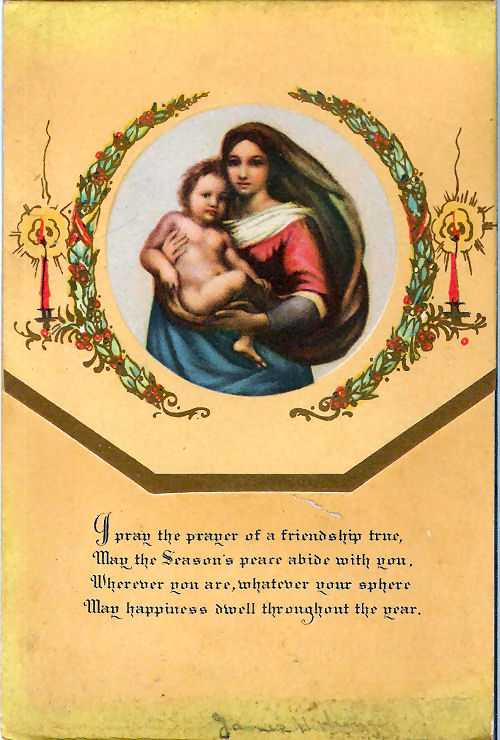
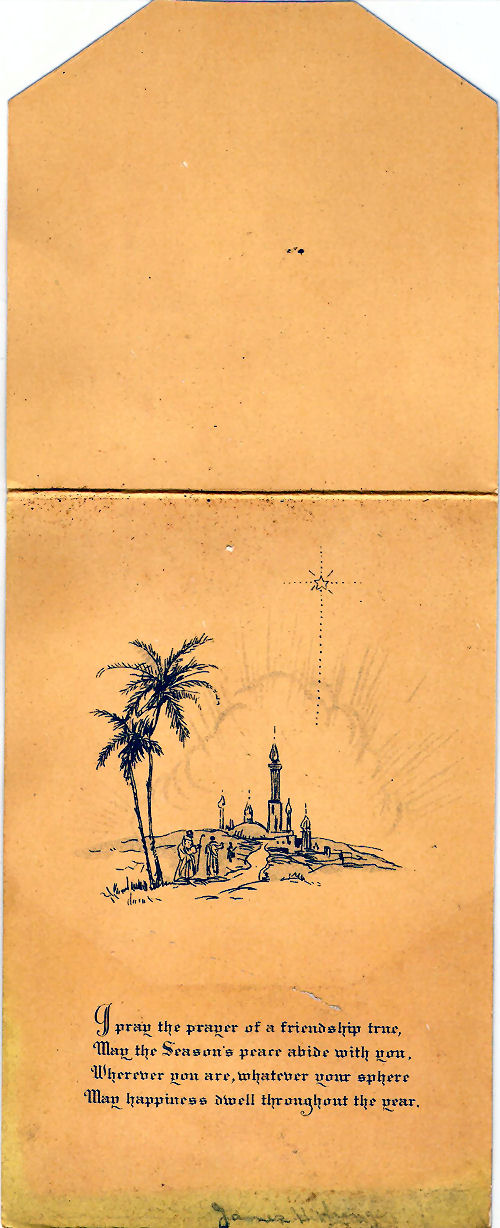
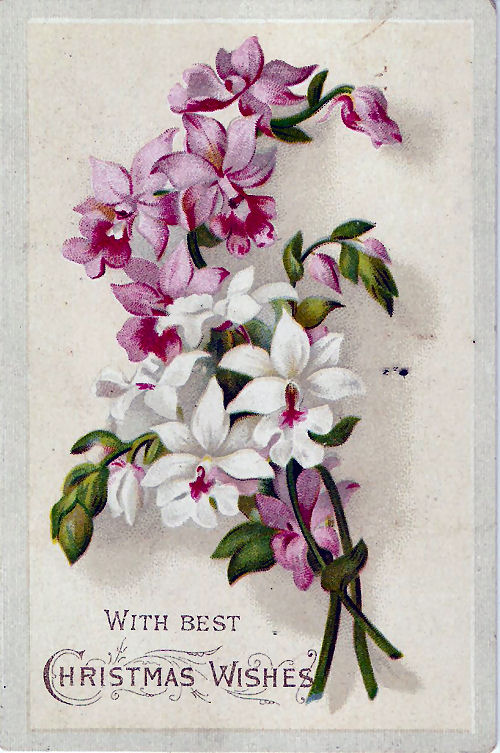
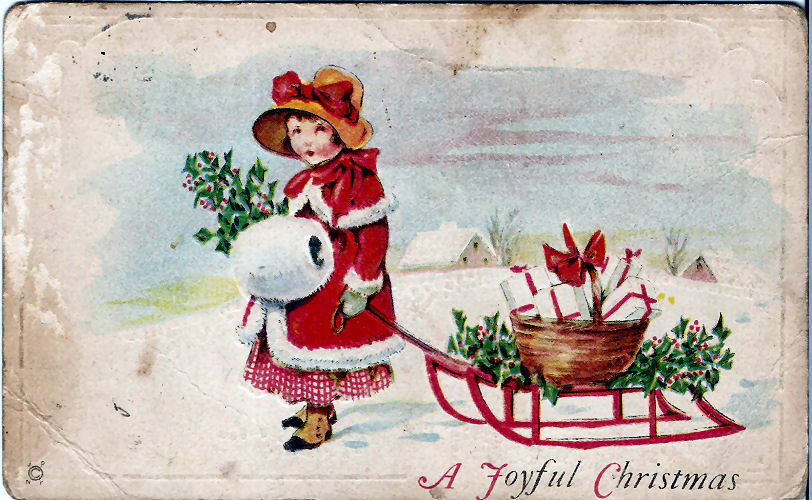
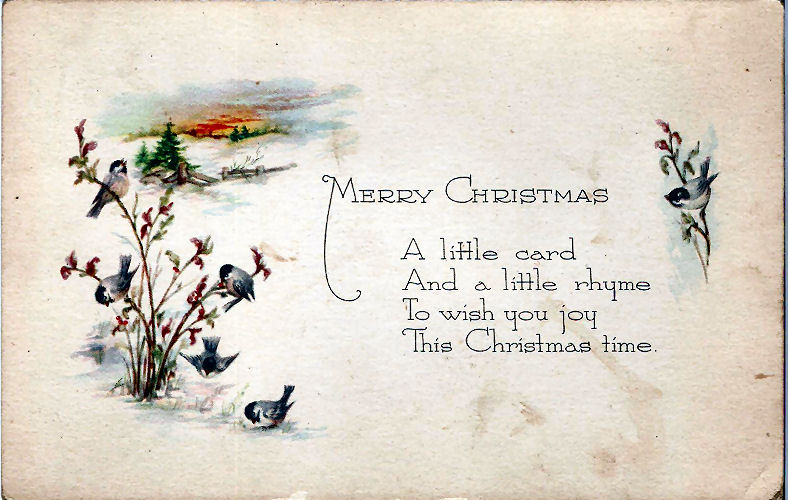
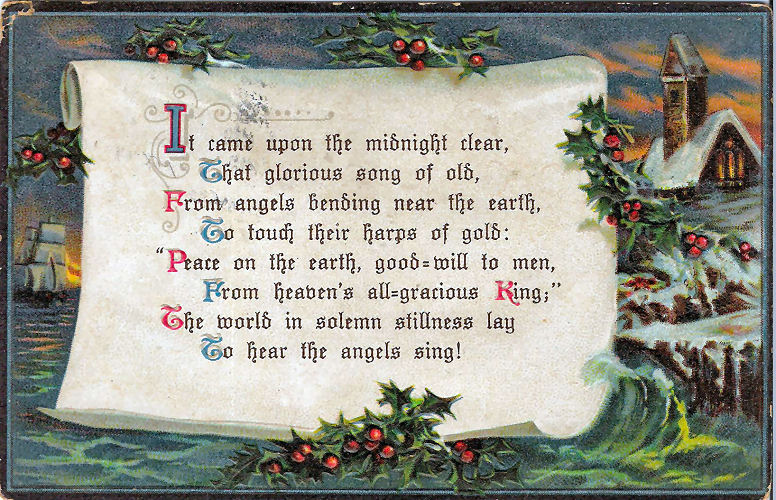
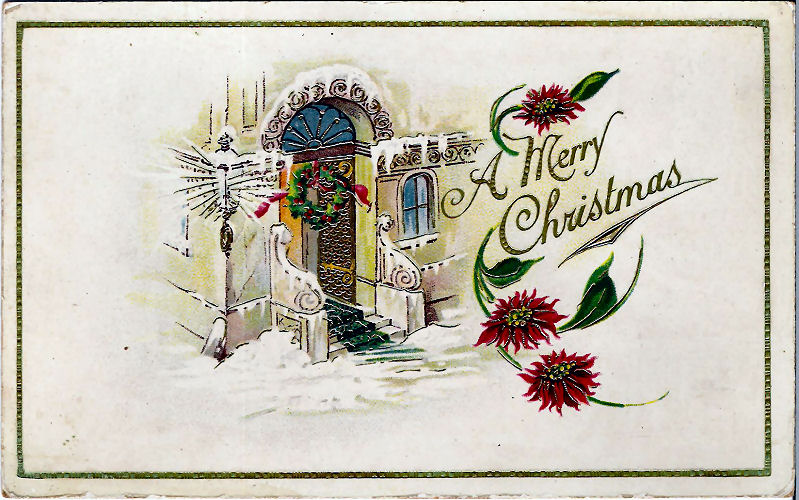
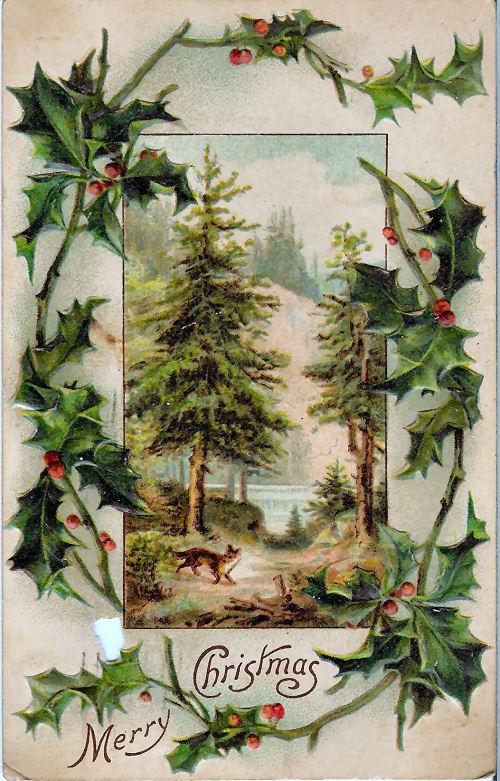
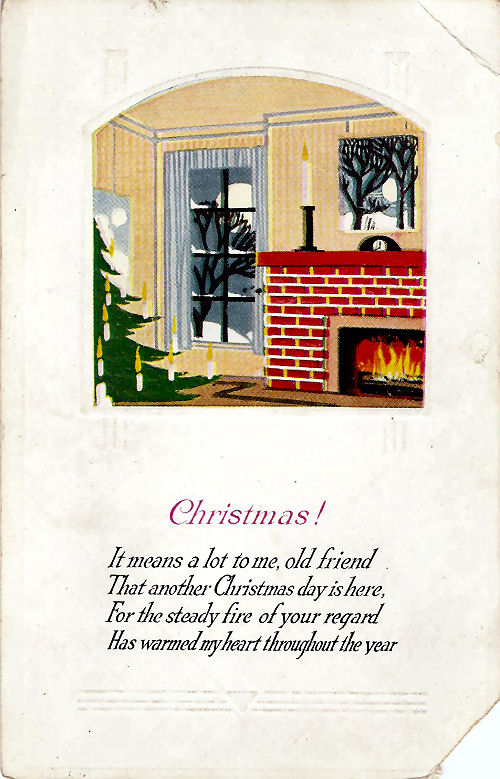
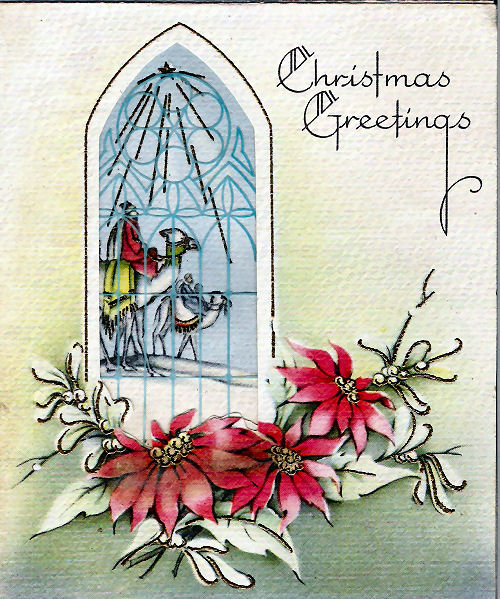
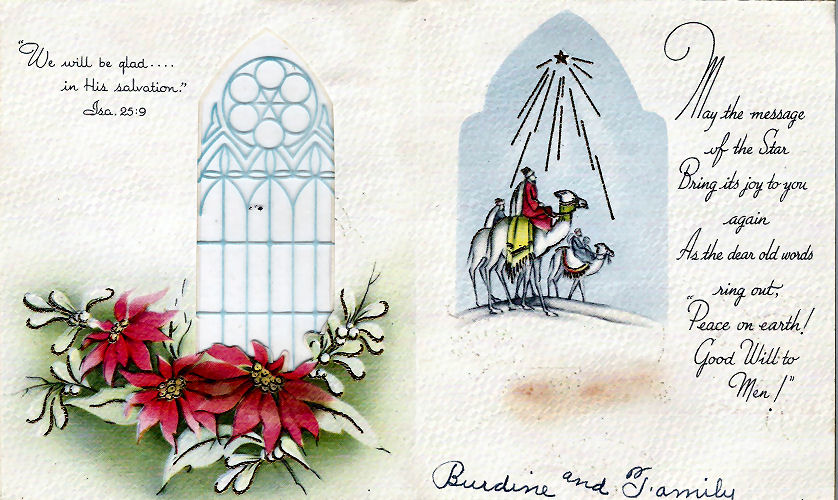
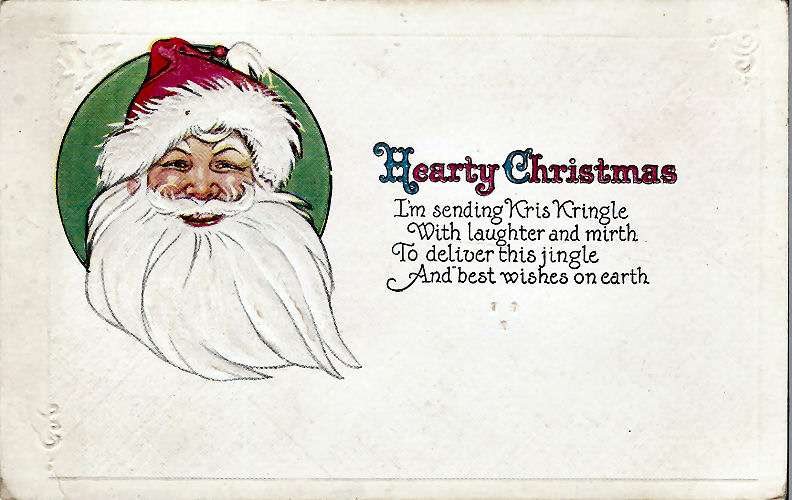
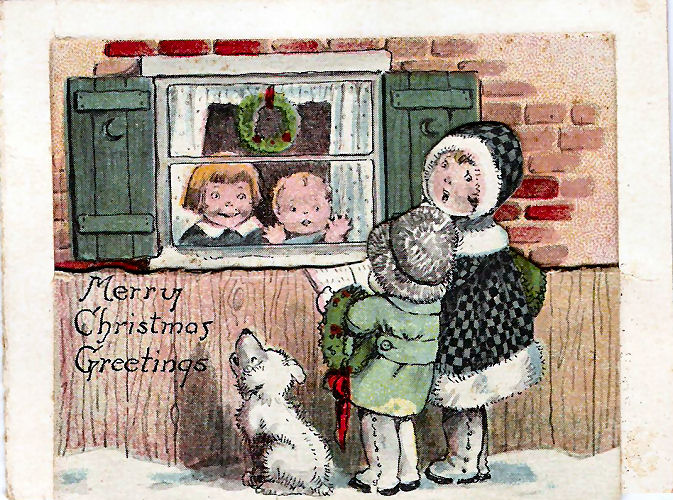
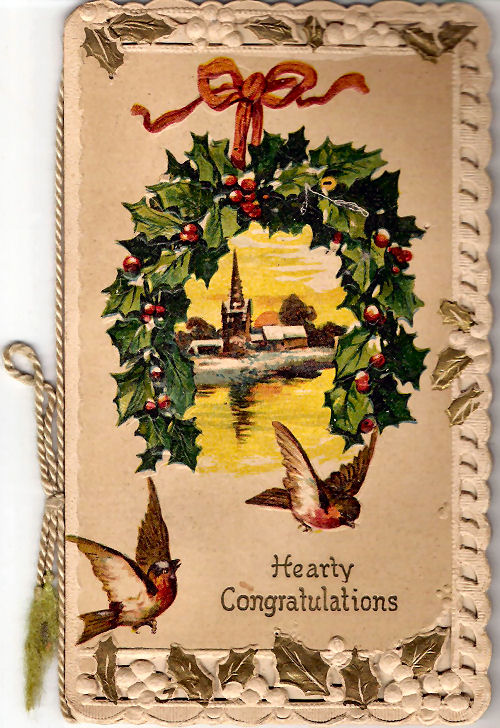
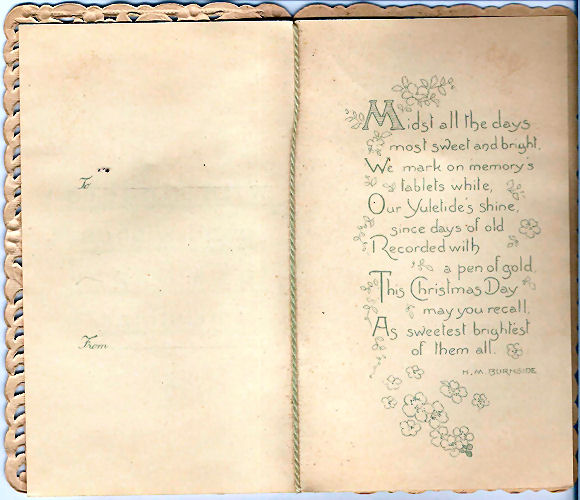
| At the present time, glitter is often employed on Christmas greeting cards, especially to convey the sense of 'snow' or 'frost'. The card below has a simulated sprig of holly, with cardboard leaves, wooden berries and a silk ribbon, attached to the front cover. |
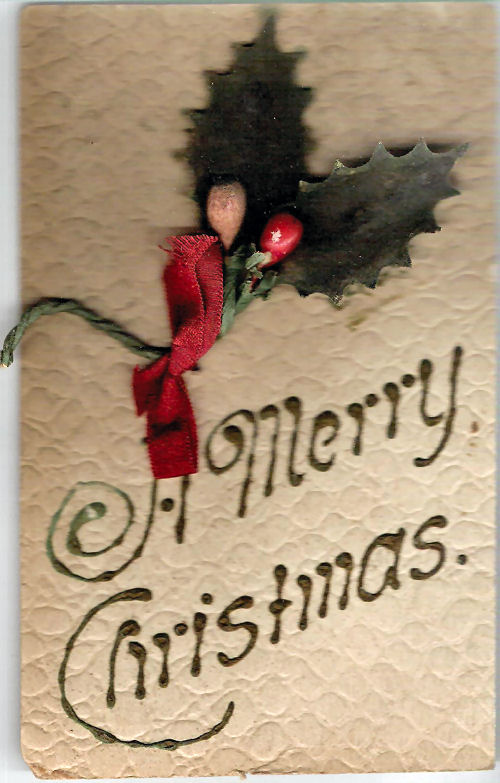
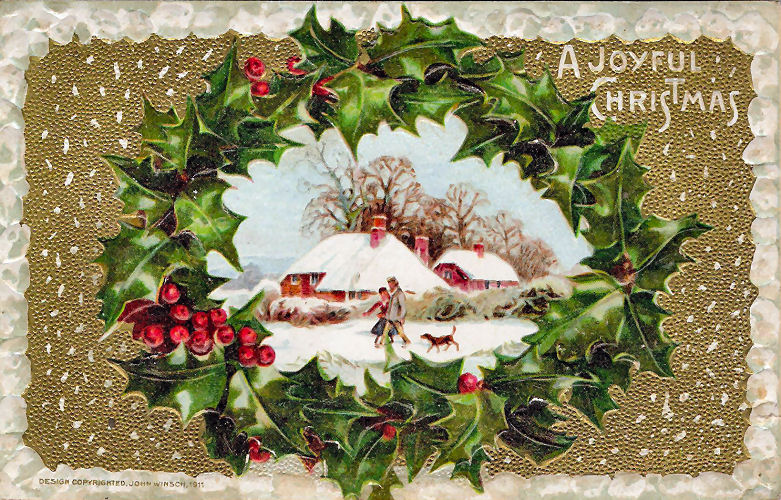
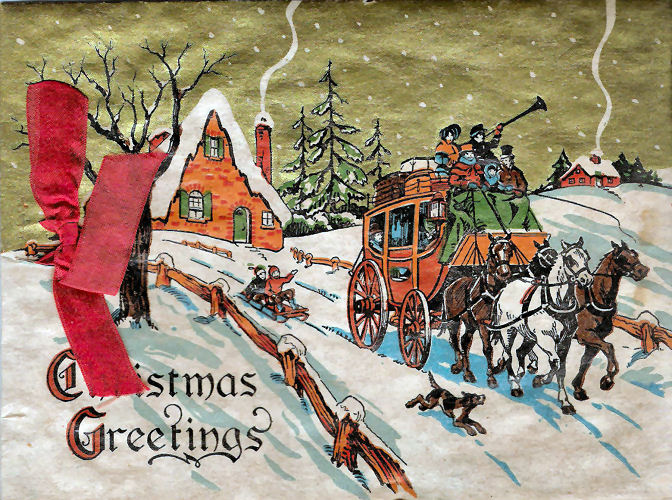
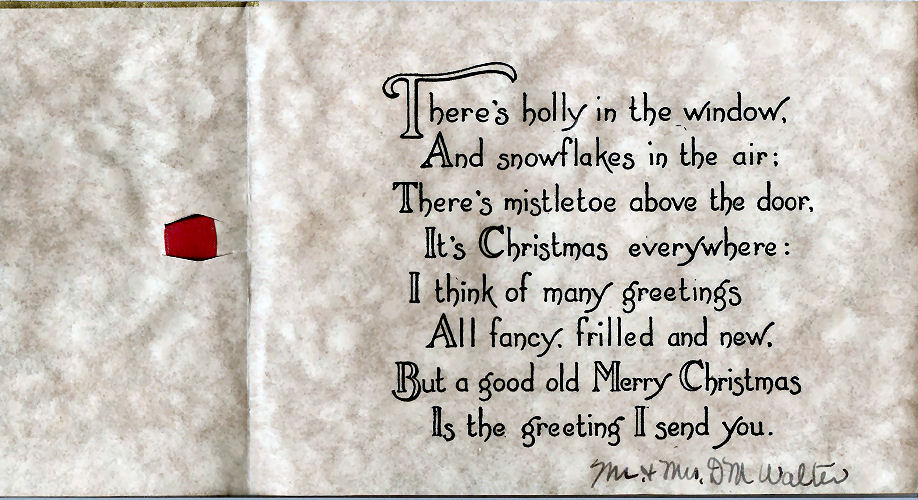
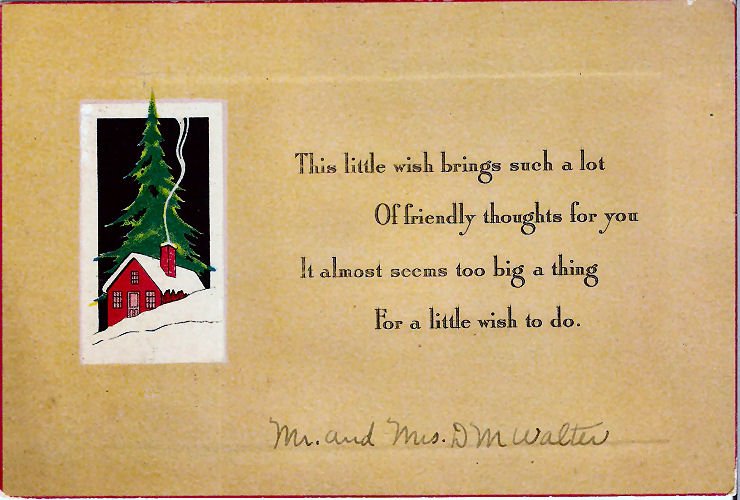
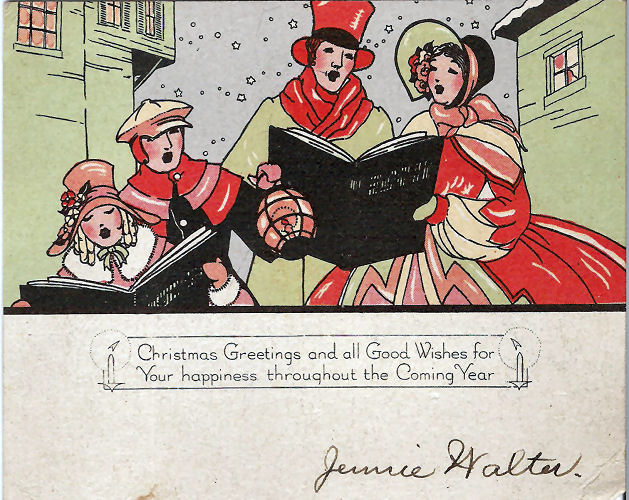
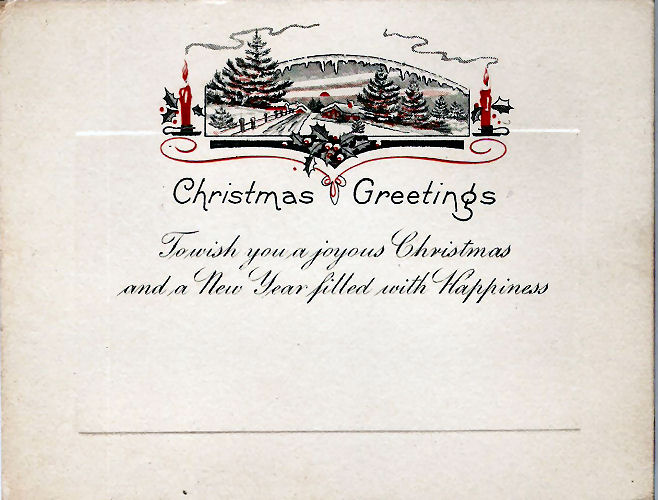
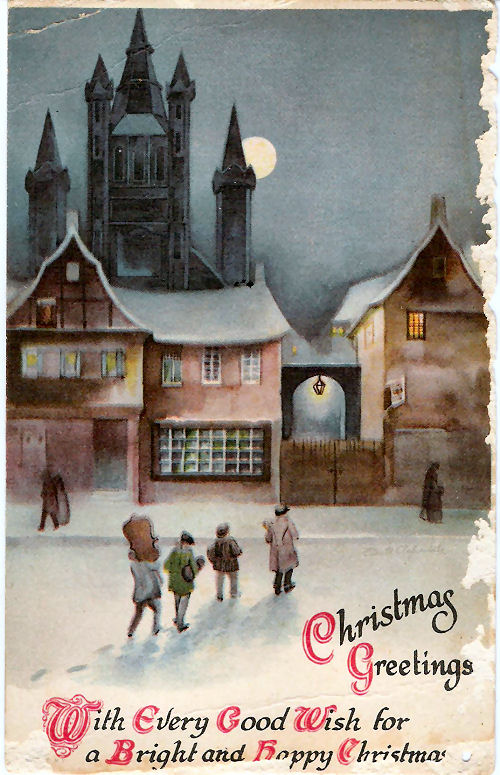
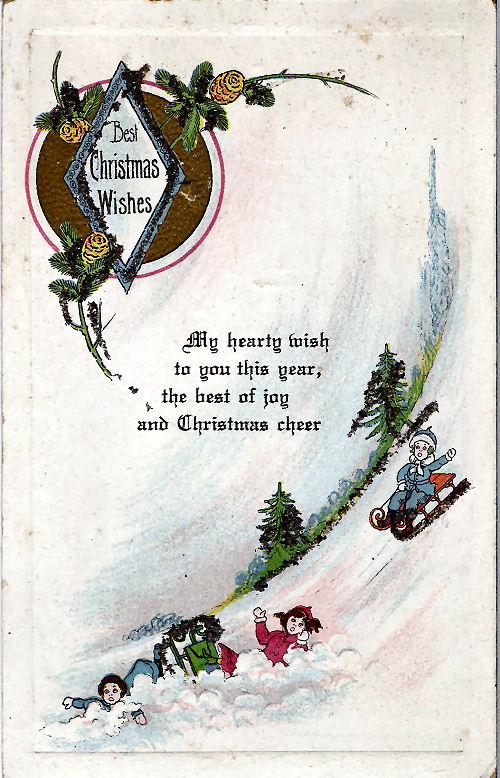
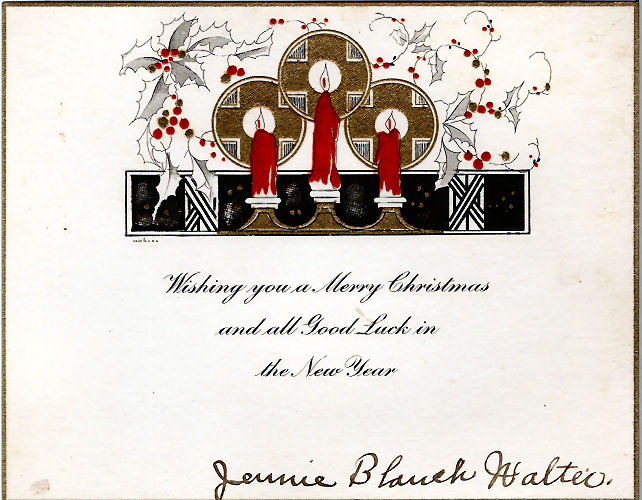
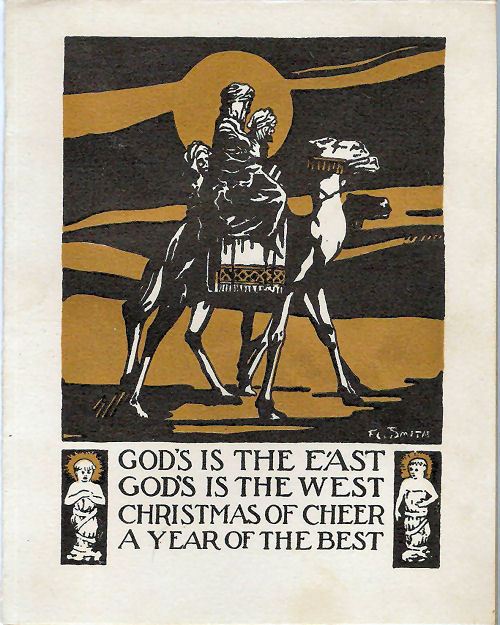
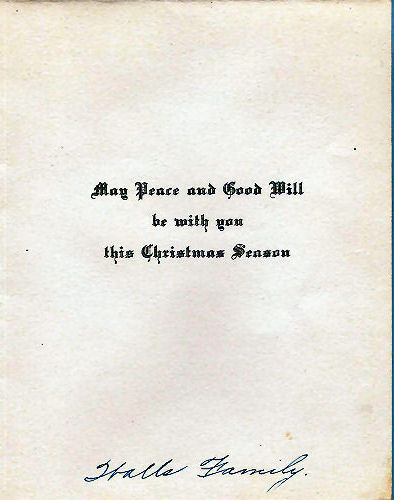
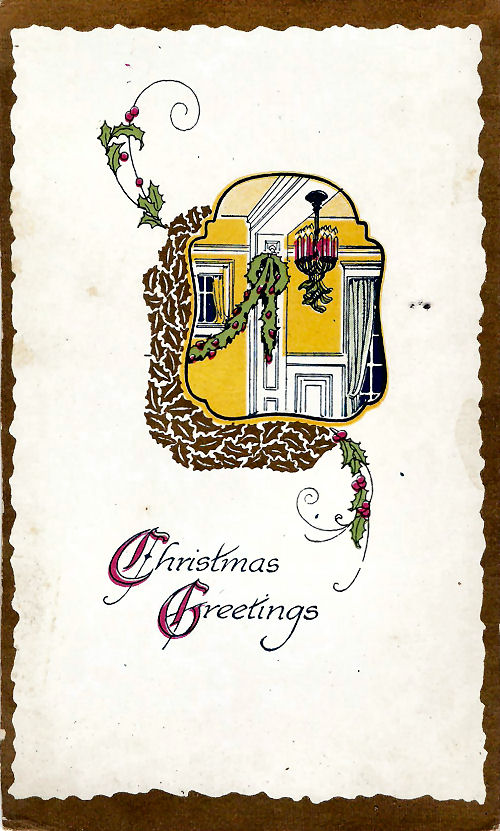
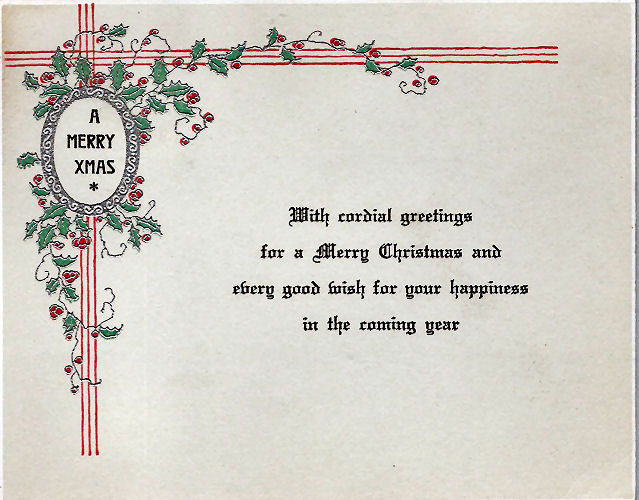
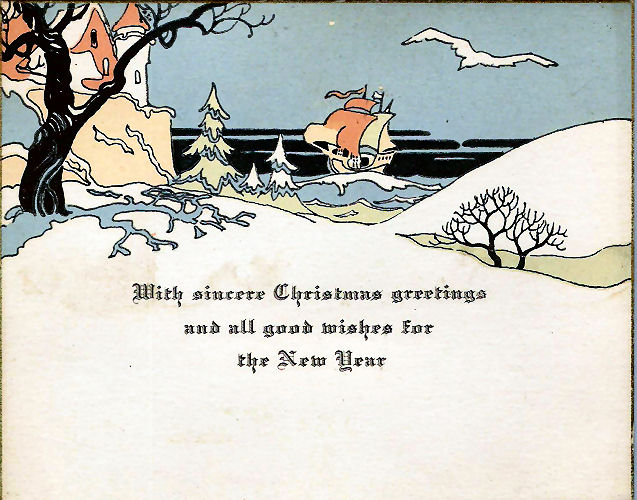
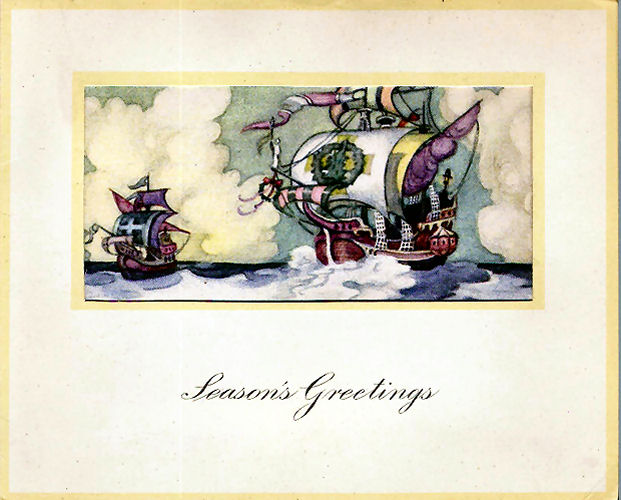
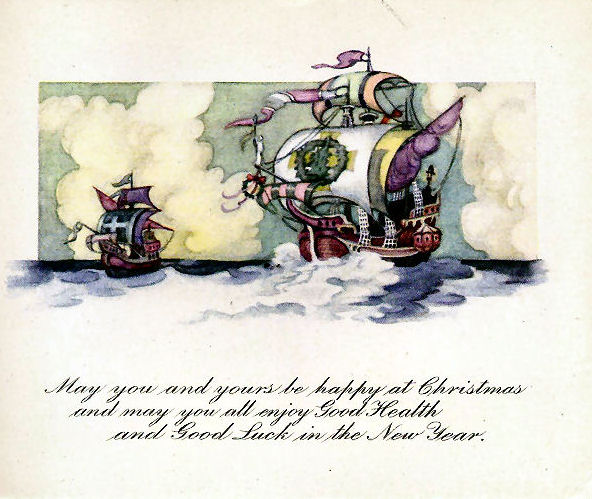
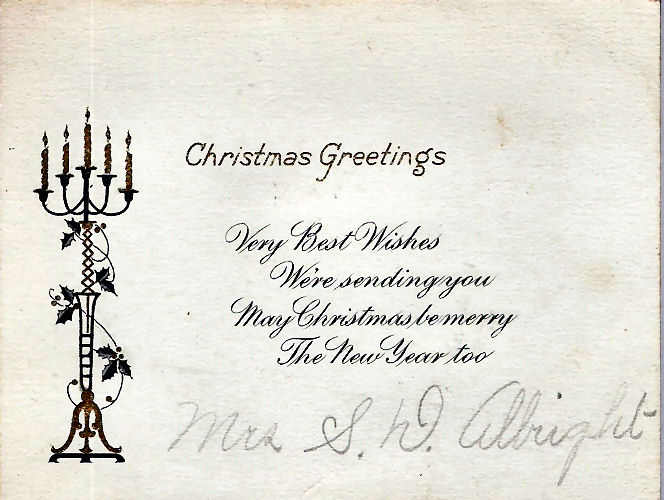
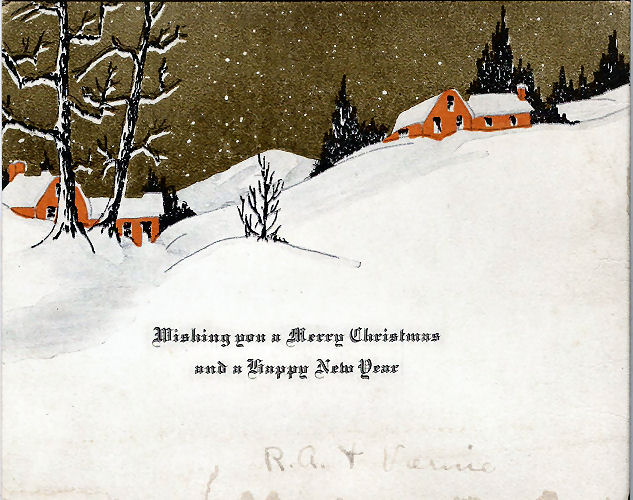
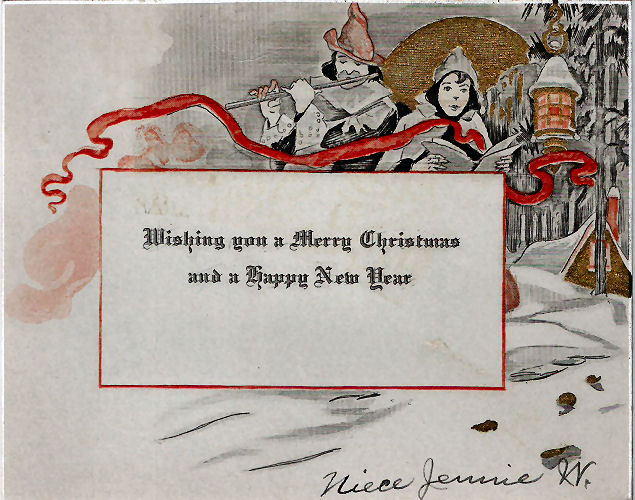
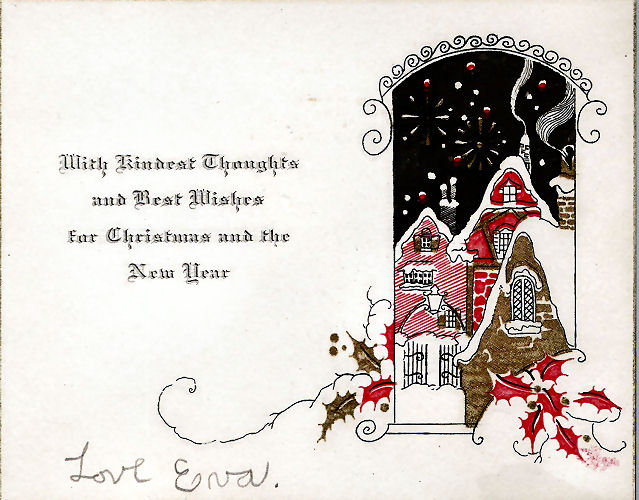
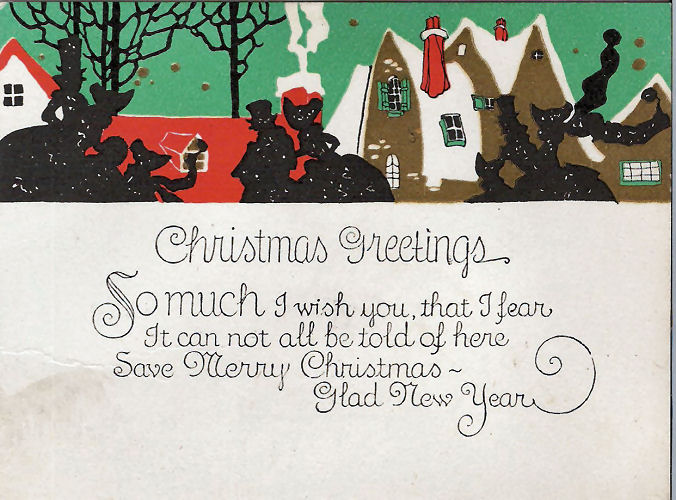
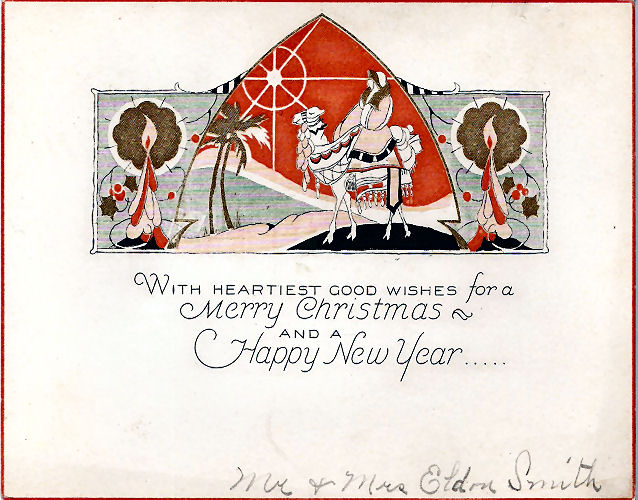
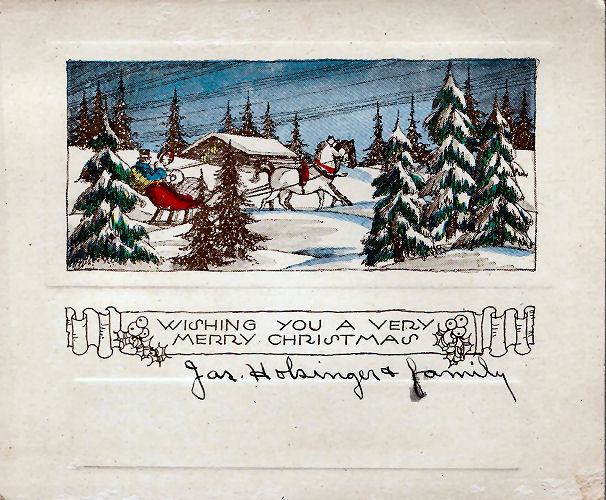
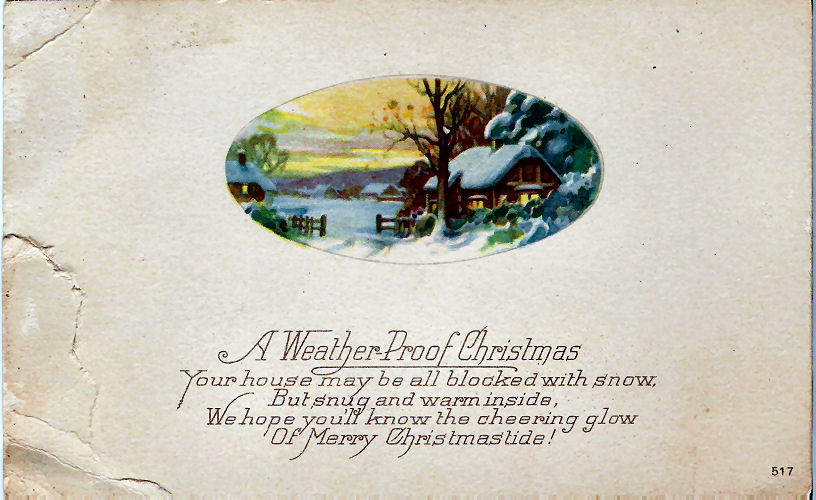
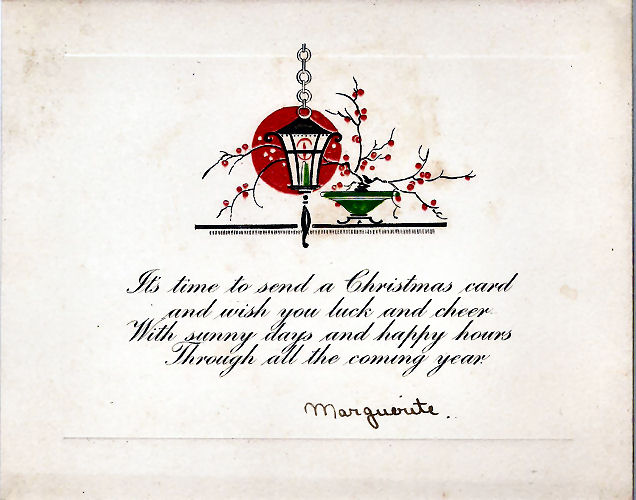
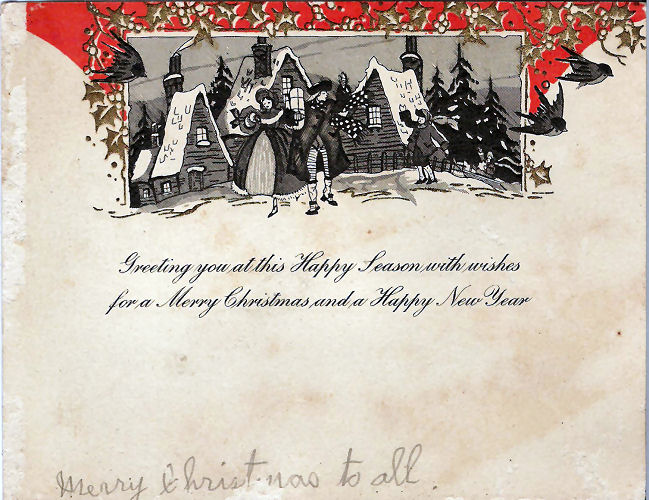
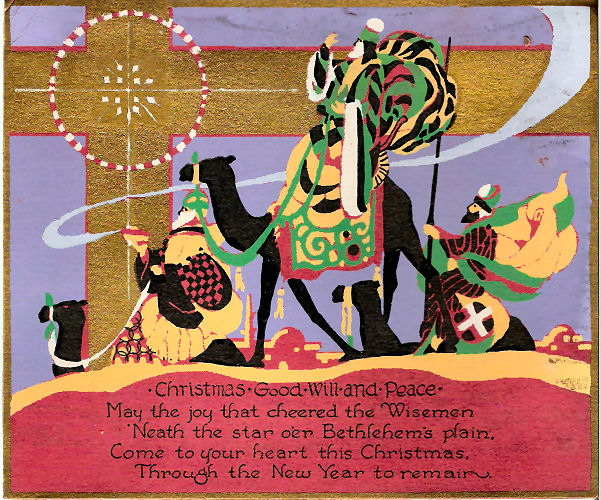
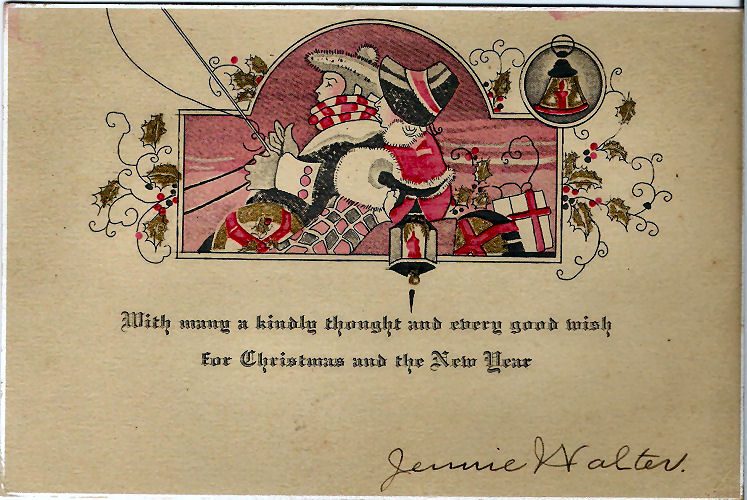
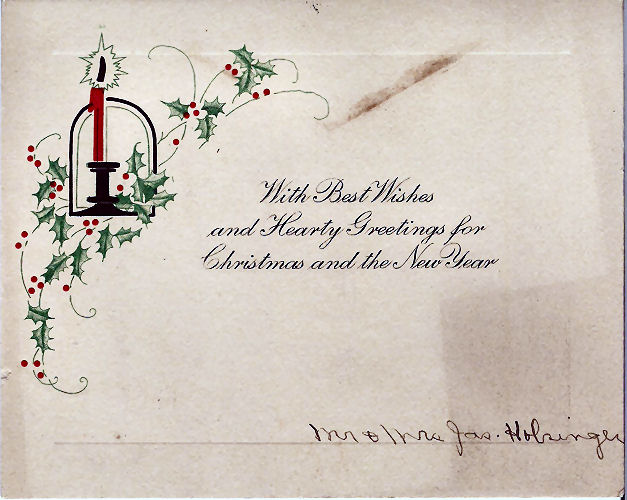
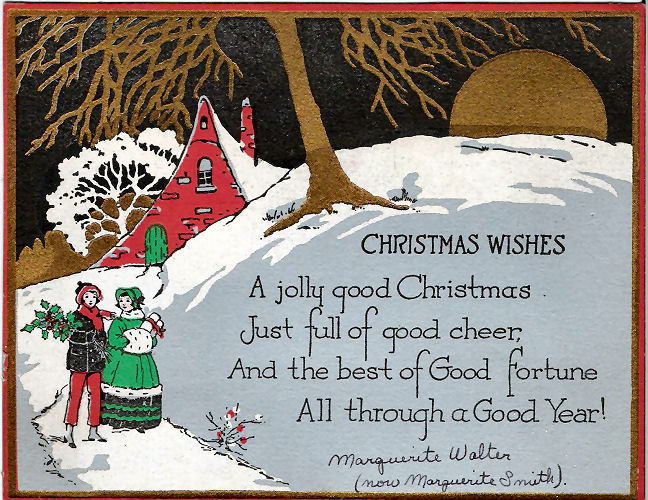
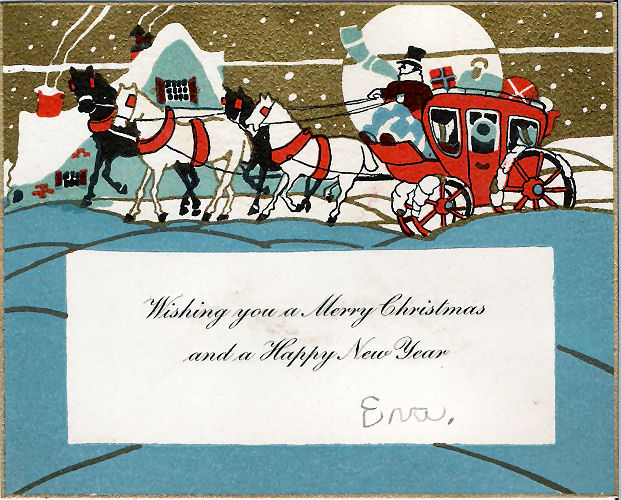
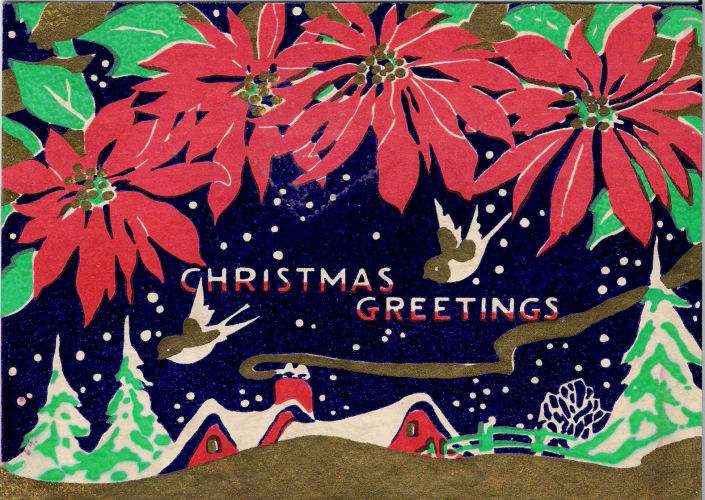
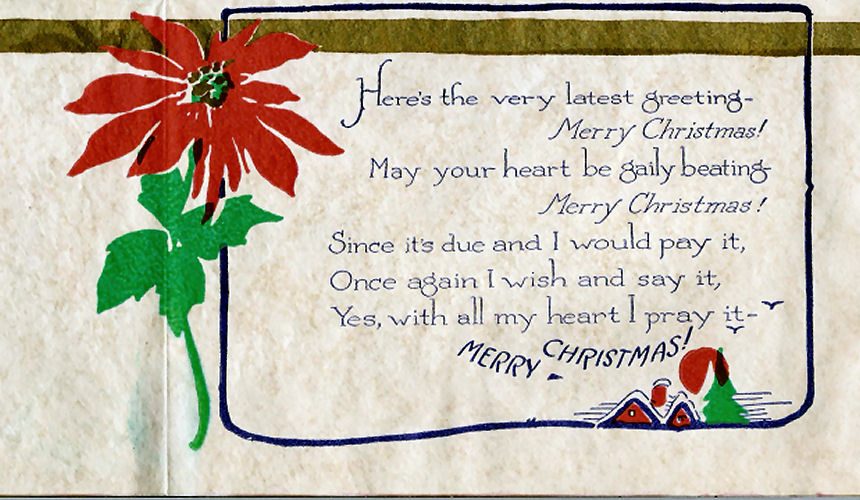
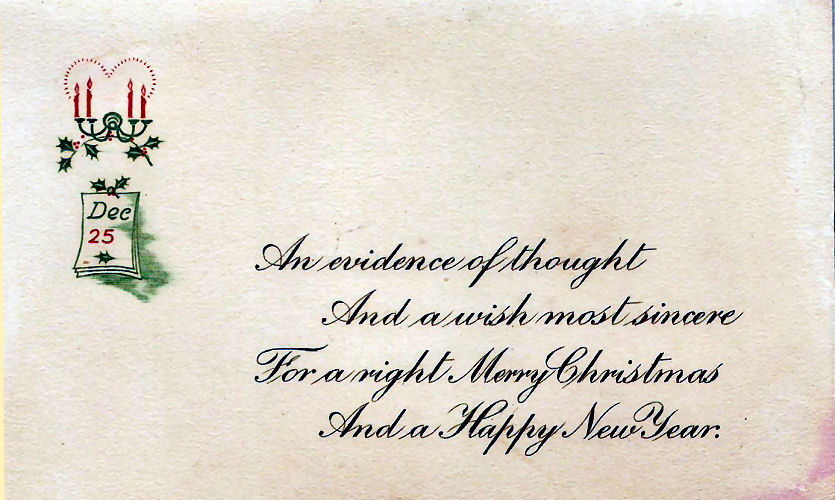
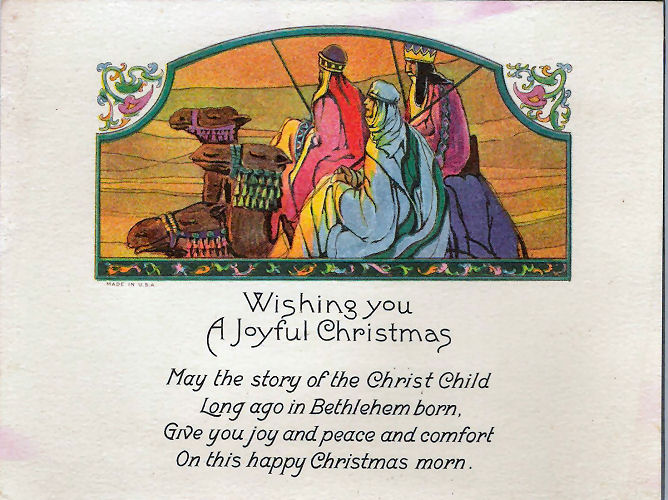
| Some, but not all, greeting card envelopes had printed inside surfaces. In some, the actual envelope was printed so that its inside would bear a pattern. In others, a separately printed piece of paper would be attached to the inside of the envelope. Also note the Christmas Seal stamp (issued by the American Lung Association), dated 1929, on the example displayed below. The proceeds from the sale of the Christmas Seals stamps benefited the research of the American Lung Association. During the early 1900s, through the 1940s, tuberculosis and similar diseases affected the lungs, especially of children. The Christmas Seals often, but not always, contained the phrase 'Health Greetings' rather than 'Christmas' or 'Season's' greetings. |
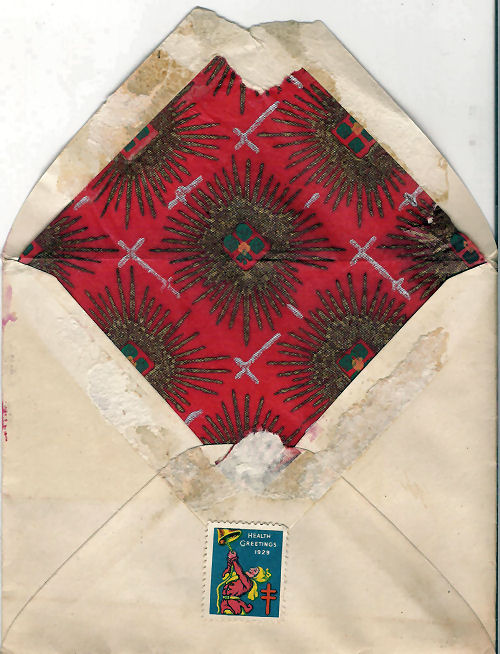
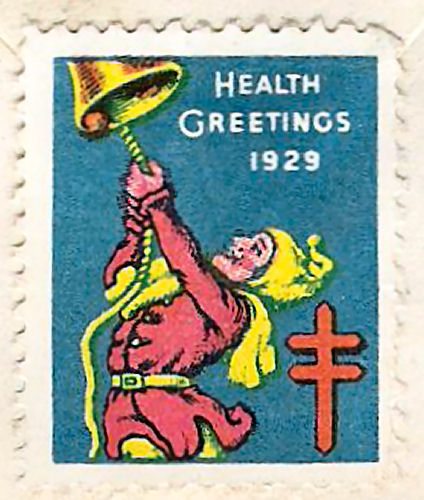
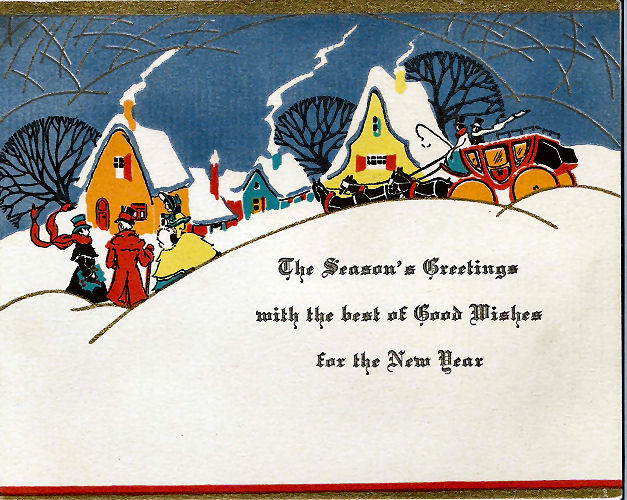
| Below is another example of a greeting card envelope which has a design on the inside. Unlike the example exhibited above, which consisted of an overall pattern, this example consists of a stand-alone Christmas scene. |
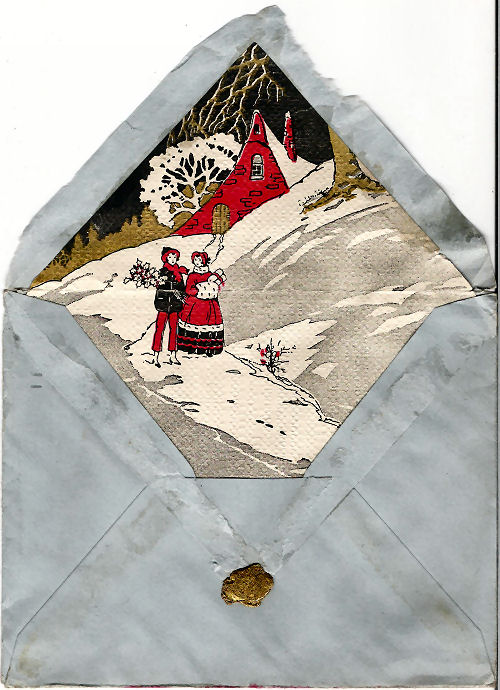
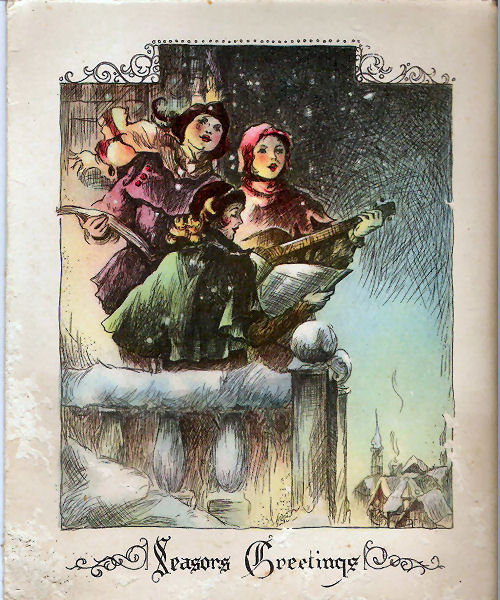
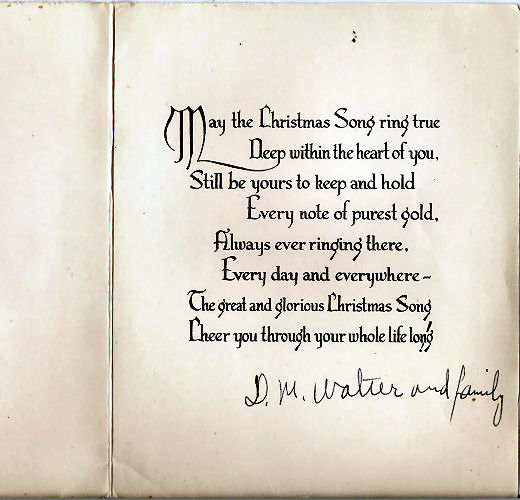
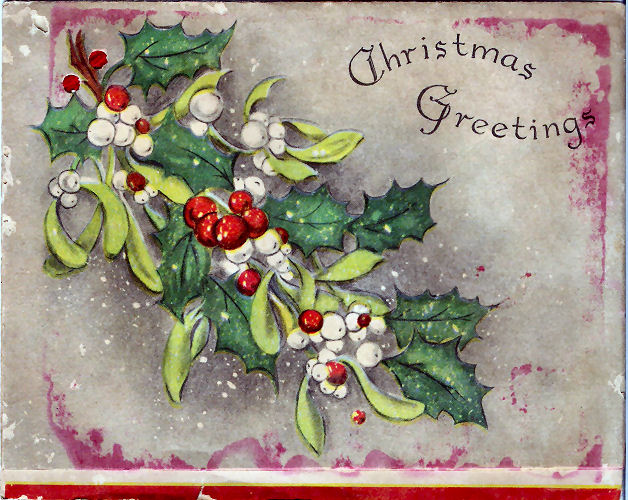
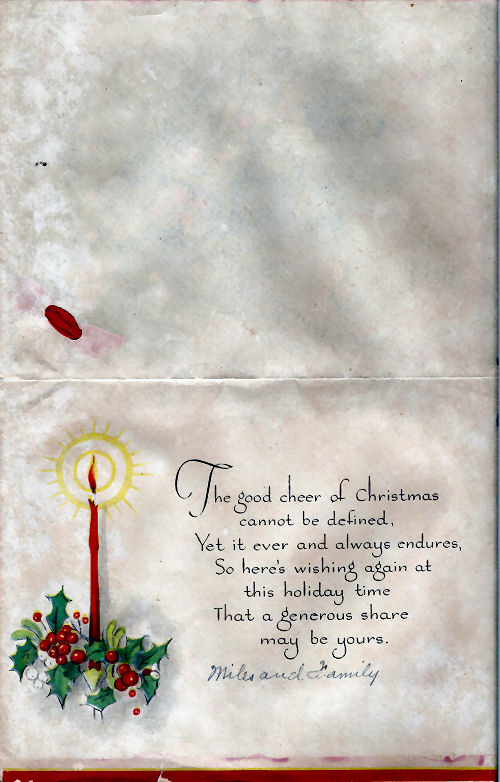
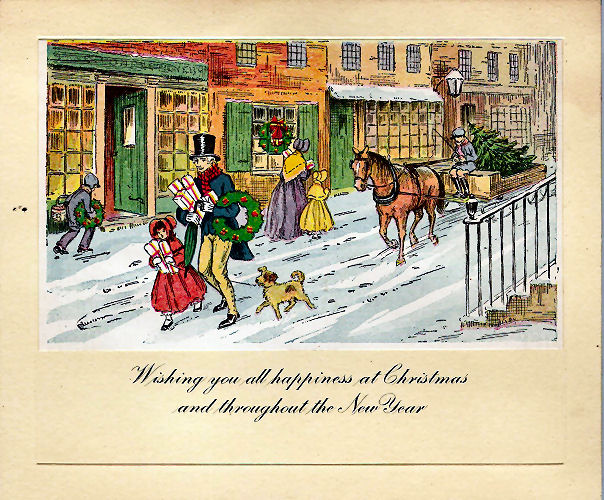
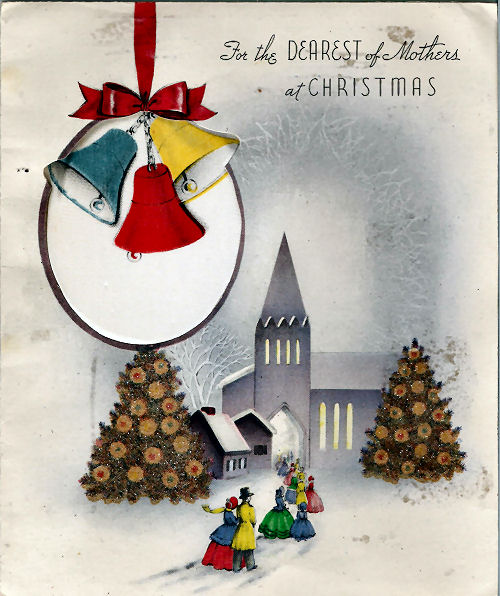
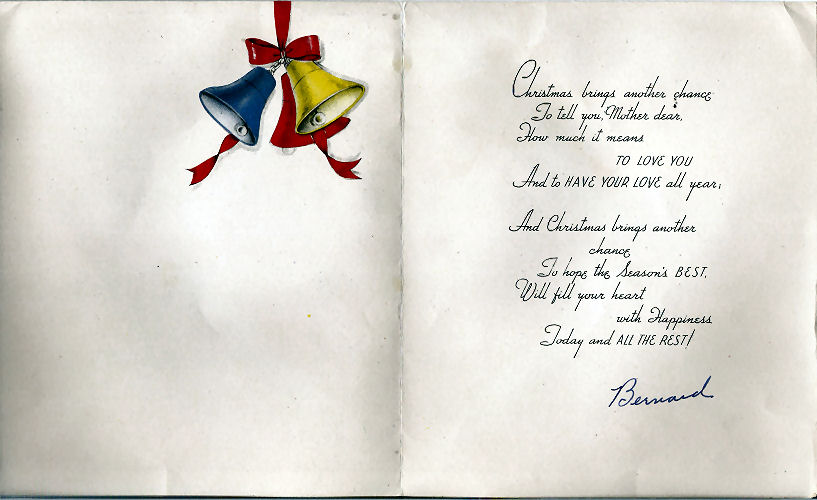
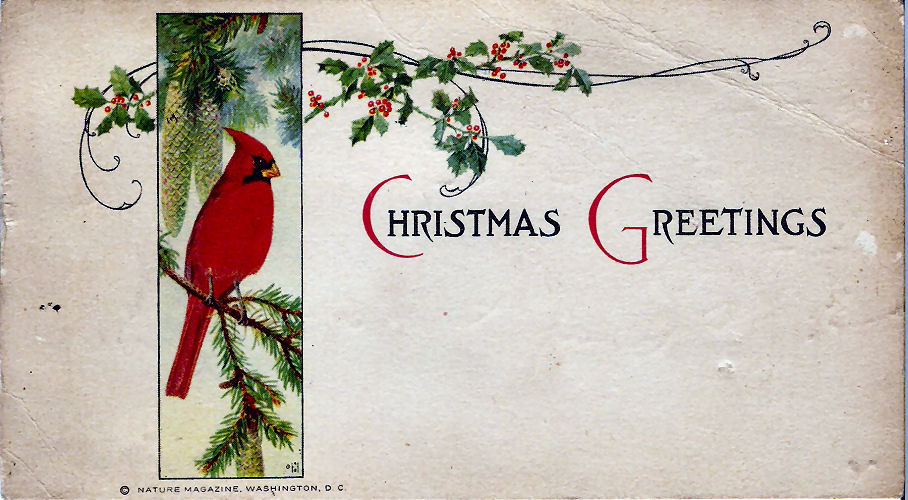
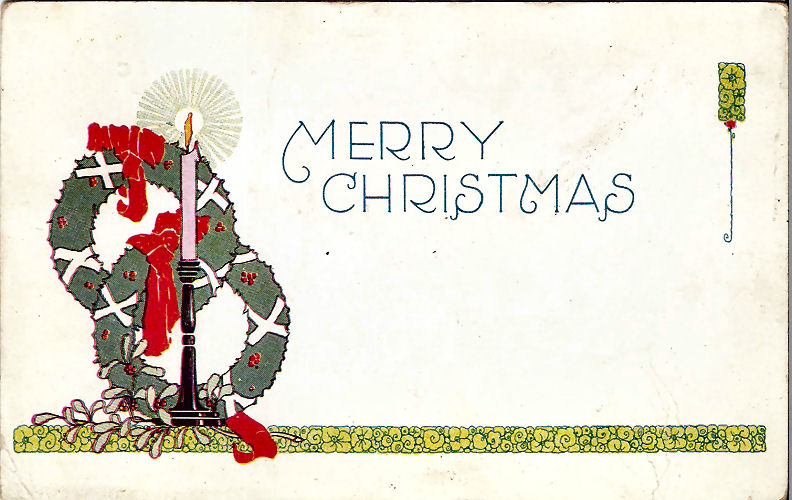
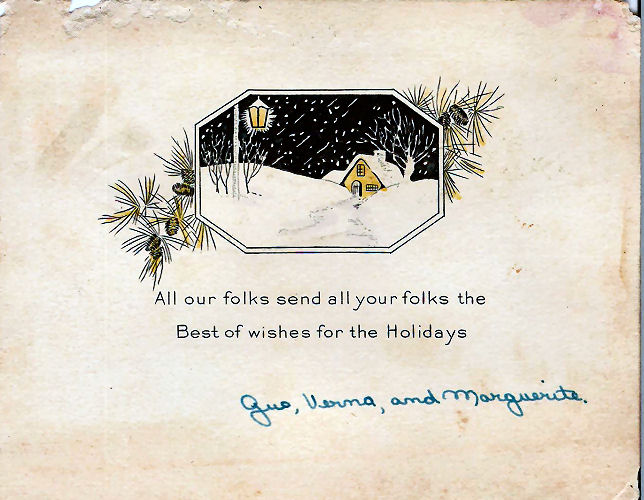
| Lithography was the favored method of greeting card production in the early 1900s because of the ability to print in color more easily and quickly than engraving (i.e. etching). The card exhibited below bears the legend: Etching Genuine Hand Colored. |
